Best business gadgets and accessories of 2021
Welcome to our pick of the best business accessories currently available. These are the latest gadgets and tools that can help transform any modern office to become more productive and better connected.
The best business accessories you'll find in this guide have novel approaches to improving productivity and efficiency, and would fit right in amongst office staples like printers, servers and routers. These are the products that will give you that extra boost as the pandemic soldiers on and businesses and organizations worldwide discover the joys and pains of hybrid working.
- Discover the best business VPN for you

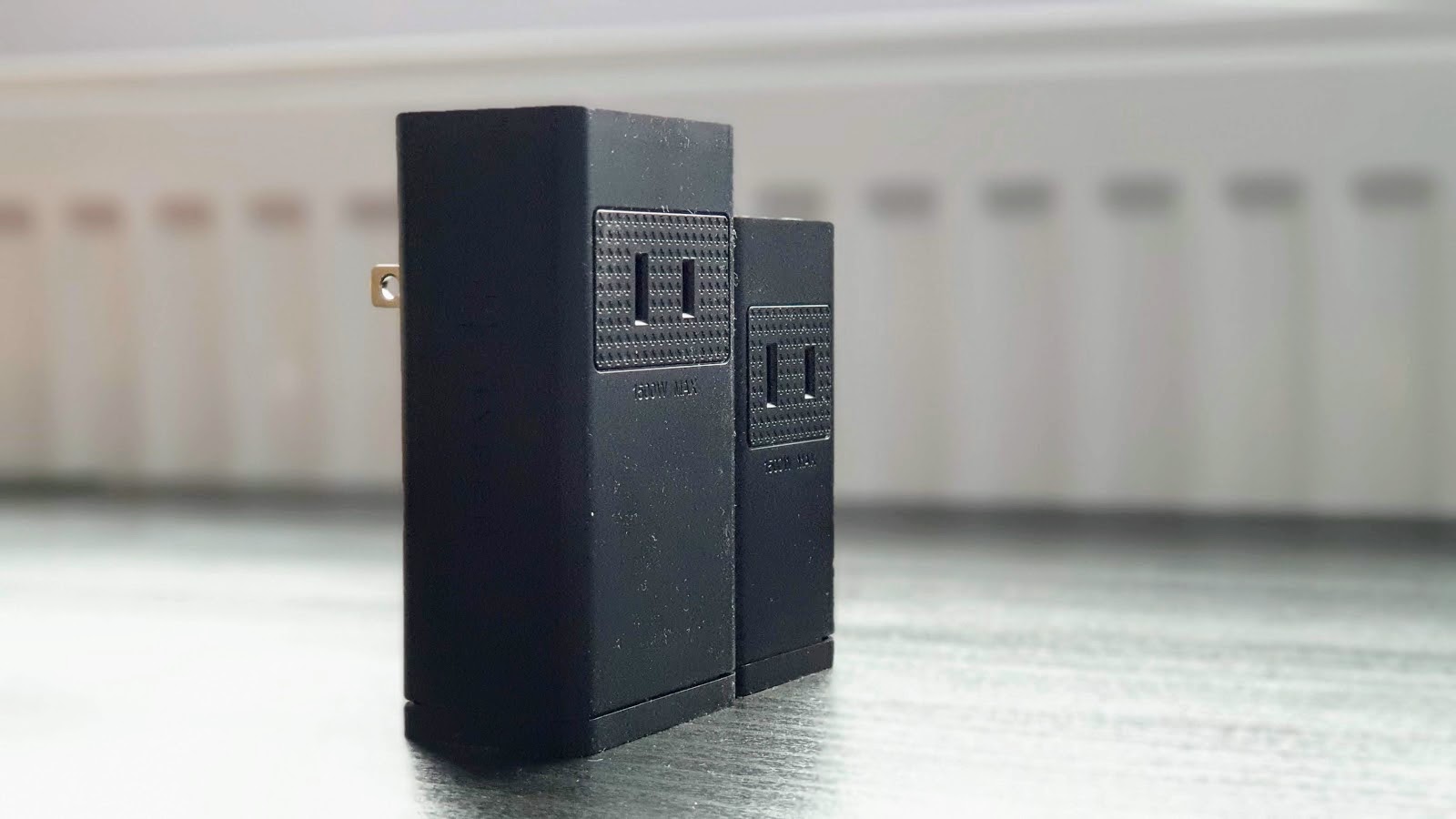
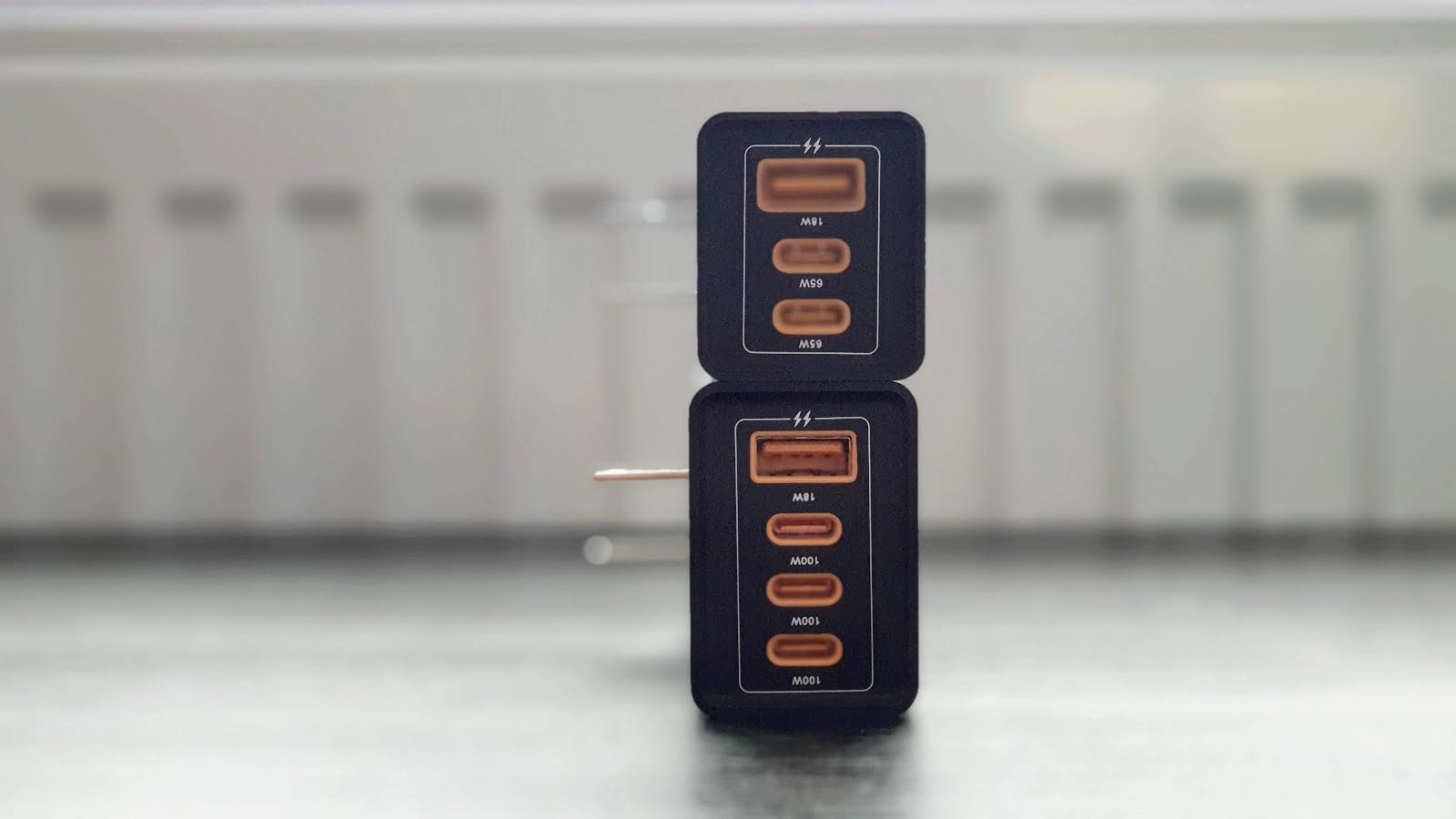
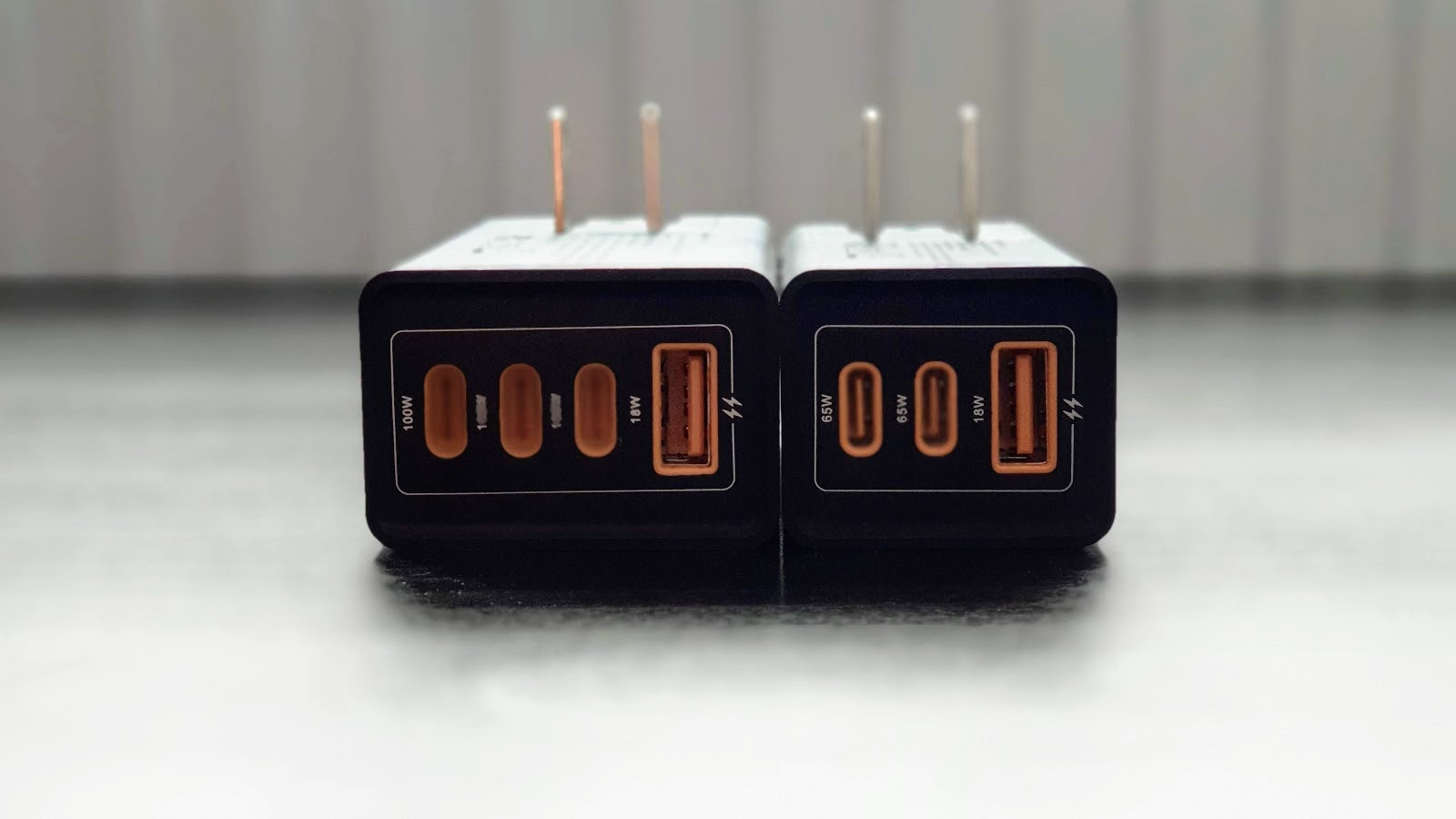
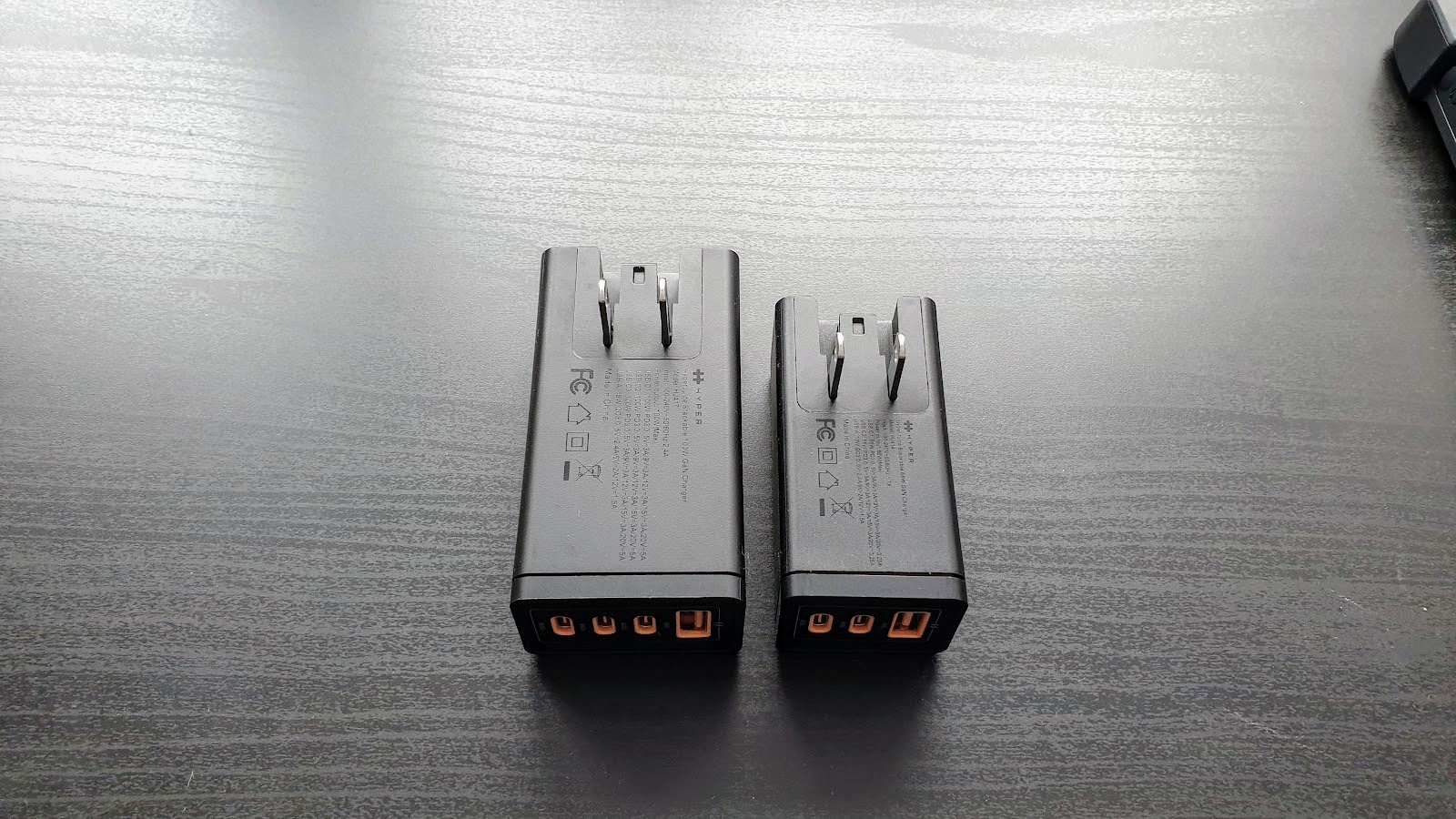
HyperJuice, which is owned by tech accessory behemoth Targus, launched a 100W stackable 100W USB-C charger that is based on Gallium Nitride (GaN) technology, allowing it to be more power efficient. That means that it is far more compact than more traditional power delivery technologies and can also deliver much higher power outputs.
Other than a 100W model, there's a smaller 65W one which is currently out of stock. At 85 x 45 x 30.5mm for a weight of only 166g, it is small enough to be carried around comfortably.
There's a 2-pin plug and a built-in AC power outlet (1500W rated) with three 100W-rated Type-C connector and a 18W USB Type-A port. What that means is that you can in theory, plug in a 16-inch Apple MacBook Pro laptop.
But don't expect to be able to run a mobile workstation or a gaming laptop with a powerful discrete graphics card from it.
Because of its design, it fits snugly against any wall sockets which makes it less prone to randomly fall out. However, we wouldn't recommend stacking 10 of them to a single wall socket as the combined weight might stress the latter.
It doesn't come with any cables so you will have to provide your own. Make sure your USB cables can handle the power requirements of the connecting devices.
Note that there's no 3-pin UK plug version available at the time of writing and the warranty on the HyperJuice 100W USB-C charger is only one year.

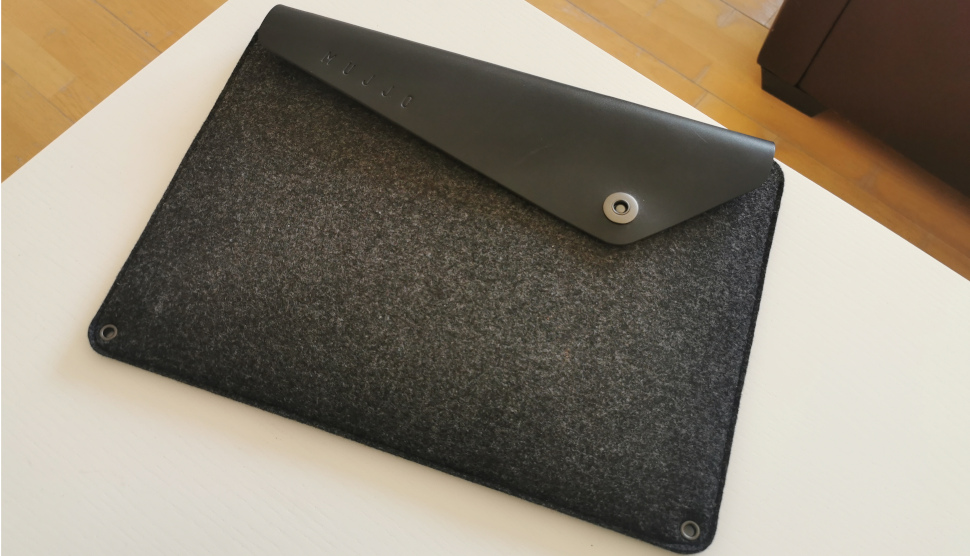
Keeping your devices protected whilst out and about is always important - but what if you want to do it in style? Dutch company Mujjo has a number of high-end cases and sleeves for phones and laptops alike, and we got out hands on its Macbook Air 13" sleeve to try out.
The design is certainly luxurious, made from a combination of felt and vegetable-tanned leather, secured with a single snap button to allow for quick opening and closing. The sleeve has been designed for the latest new 13" MacBook Air and MacBook Pro devices, but we found it worked with other laptops as well. Inside, your device is kept safe thanks to the felt interior, which also includes integrated storage compartments to allow you to store documents and other essentials - and there's even a special slot to store debit/credit cards or an SD card.
This is definitely a luxury item for your device, and one that will certainly make you stand out from the crowd.

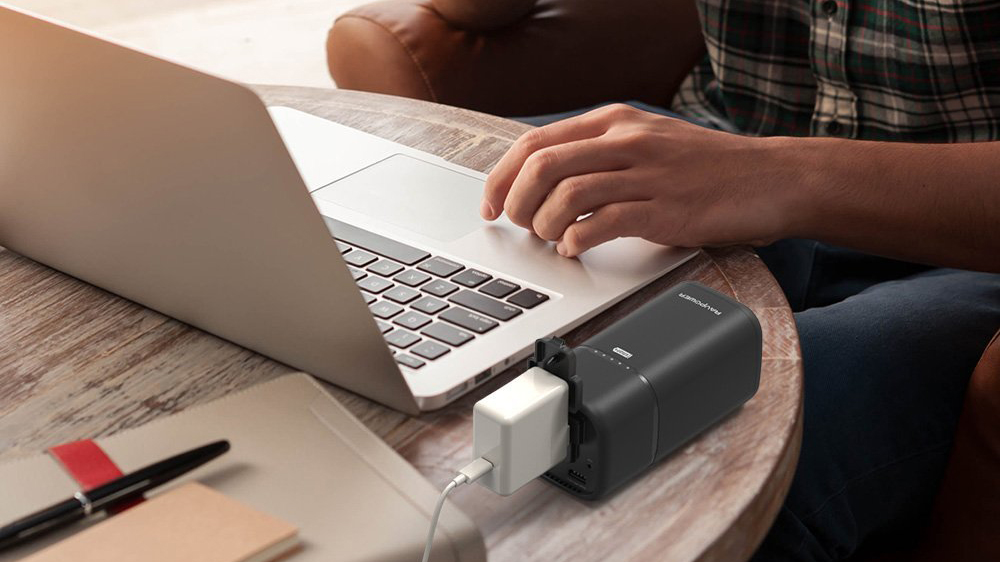
Keeping all of your devices topped up and ready to use has certainly gotten easier with the advent of portable power banks. However, what about when you also need to power a laptop, portable monitor or even a small TV when outdoors and away from a power outlet? Thankfully, some manufacturers have begun to add AC outlets to their portable batteries so you can charge or power almost any device regardless of whether it connects via USB or with a plug.
For those looking for a portable laptop charger that won’t break the bank, RavPower has you covered. The company’s PD Pioneer 20000 costs only $89.99 and can charge all of your devices as it features a USB-C port, a USB-A port and a three-prong AC wall socket. RavPower also makes two different variants of the device depending on whether you need a North American or UK wall socket to charge your laptop or other AC-powered devices.
As its name suggests, the PD Pioneer 20000 contains a 20,000mAh battery capable of delivering 74Wh of power. The device’s 30W PD port can fully charge a 2015 Macbook in around two hours while its Quick Charge 3.0 port can deliver up to 18W of power to compatible USB-A devices. The PD Pioneer 20000’s AC port can even reach a max AC output of 100W.
If you’re getting ready for a trip and just remembered to pack your PD Pioneer 20000, you won’t have to wait too long to fully charge the device as it can be recharged in just three hours. While certainly larger than most power banks, the device can easily be slipped into a side pocket of a backpack or messenger bag as it is 2.7 inches wide and 5.8 inches long. However, you won’t want to be lugging the PD Pioneer 20000 around for too long as the device weighs 660g.
In addition to one USB-C to USB-C cable, RAVPower also includes a carrying pouch complete with pockets to keep its portable laptop charger safe on the go. It’s worth noting that a USB-C adapter isn’t included but if you’re in the market for a portable battery with a USB-C port, you’ll likely still have the one that came with your smartphone or laptop.
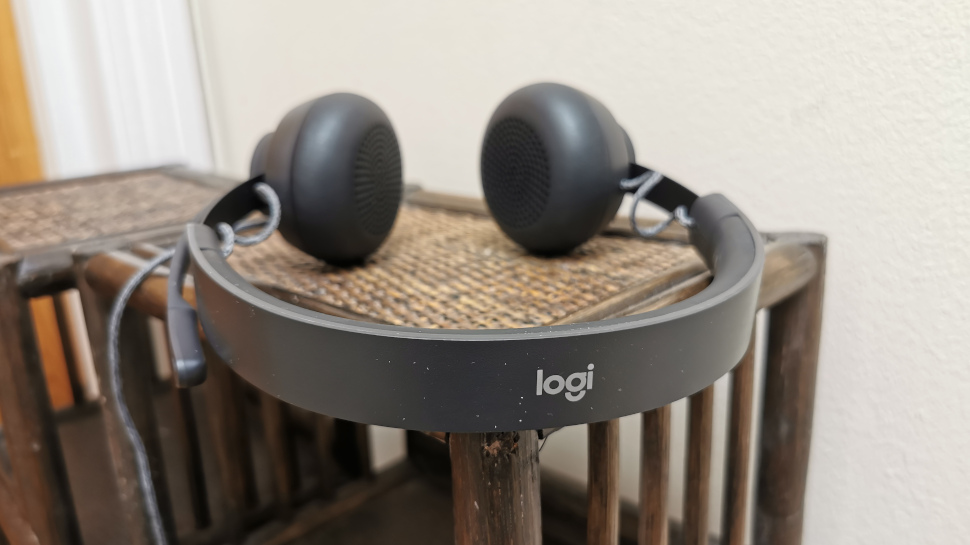
As employees around the world adjust to a new way of working from home, the need for a robust and high-quality headset can be vital for those needing to take part in multiple conference calls.
Logitech is well known for its wide range of computing accessories, and the Zone Wired headset is its pitch to conquer the headset market for home workers. Connecting via USB-C or USB-A, the Zone Wired headset is a handy companion for video conferencing and collaborative calls across all the major software platforms - we've tried it with Zoom, Microsoft Teams, Google Meet and Cisco Webex with no issues. Audio quality is incredibly clear, with the built-in microphone having no problem picking up speech even at low volumes, and the headphones themselves giving excellent playback - and aren't half bad as general music devices either.
The microphone even features an automated mute function when you flip it up, meaning if you need to grab a drink of water, cough or even shout at the family to calm down, your colleagues will be none the wiser.
However the only downside is, as the name suggests - the lack of wireless capability. The Zone Wired does feature an extremely lengthy headphone wire, but if you're looking for something you can use whilst on the move, this is not for you.

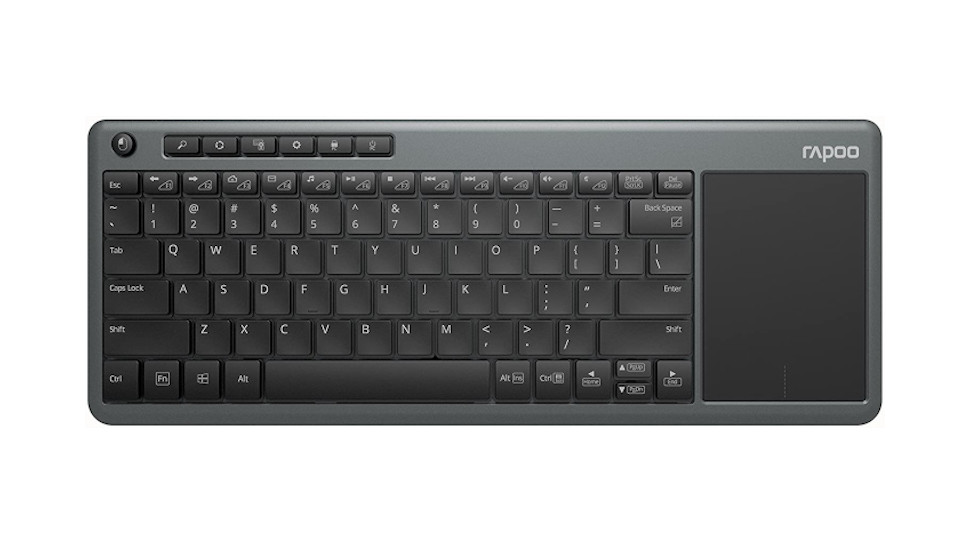
The K2600 is the latest in a growing band of multimedia keyboards invading boardrooms and TV lounges, as businesses and movie fans alike discover that smart TVs, HTPC and business displays require more than just a remote control to make the most out of their functionalities.
This keyboard comes with an integrated touchpad, but without physical mouse buttons, which is likely to irk purists that prefer the Logitech K400 Plus.
At £24.99 from Argos (roughly $30/AU$45), it is cheaper than the aforementioned Logitech model, but less widely available. The much larger touch area of the K2600 means you will be able to swipe, pan, zoom, tilt and perform all kinds of multitasking gestures, perhaps with greater ease.
The peripheral connects with the host device via a bundled Bluetooth dongle (lodged inside the keyboard) with a range of up to 10 meters. But you won’t be able to connect directly via Bluetooth, which is a shame.
There are also seven programmable keys located at the top of the keyboard for rapidly accessing your favorite applications.
There’s a sealed anti-oxidation membrane under the 86 scissor keys which, according to the manufacturer, extends the lifespan by preventing oxidization of the internal circuits and minimizing the risk of key defects.
Bear in mind you also get a two-year warranty, as well as two AAA batteries that should last about a year.
Note, the keyboard doesn’t support Linux and there’s no option for left handed people. We are also not huge fans of its non-chiclet key design, as the keys (which are part concave, part convex) tend to be slightly more wobbly, with spongy feedback and short travel. This certainly doesn’t help if you’re typing from your sofa, without a hard surface to work with.
Given the ubiquity of laptops, it is puzzling that only one known peripheral manufacturer has managed to produce a wireless keyboard (and touchpad) that mimics the design of laptop base units. The Keysonic ACK-540 series is more than a decade old and, while it may suffer from a way too small touchpad, it should provide a far more pleasurable experience for prolonged typing periods, minimizing the risk of RSI and wrist pain.

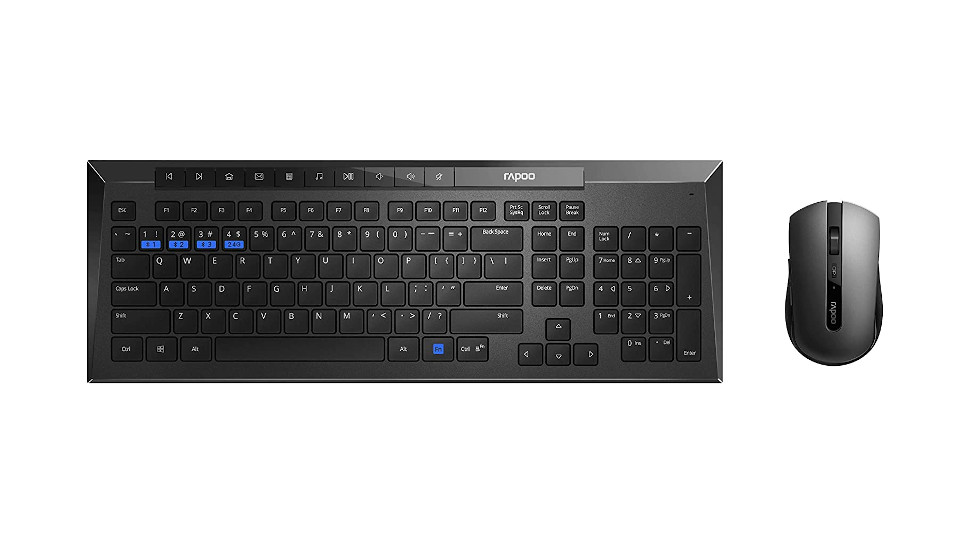
The 8200M from Rapoo is a wireless keyboard and mouse combo that can connect via Bluetooth and a bundled 2.4GHz adaptor to up to three compatible devices simultaneously, and switch seamlessly between them via four dual-function keyboard keys (1, 2, 3 and 4).
This means you should be able to connect to a smartphone, smart TV (or Android box) or laptop with ease, at a range of up to 10 metres.
The keyboard is also spill-resistant and has 10 multimedia keys located on the top edge, with 113 scissor keys in total.
The 8200M's chiclet-style keys have good travel, but the feedback should be better and the Enter key bigger. That said, we didn’t encounter any issues with touch typing and nor did we suffer a higher error.
The 8200M is available in black or white and retails for £37.70 from Box (roughly $50/AU$70).
As with other Rapoo models, this one comes with bundled batteries and a two-year warranty. The company claims the keyboard will last up to 12 months on one set of batteries, while the mouse will survive up to nine.
Speaking of the latter, you can adjust its DPI sensor from the mouse itself via a DPI switch, between 600 and 1600dpi. However, we have used it for a couple of weeks and find it slightly too mushy for our taste.
The mouse worked without trouble, but we would have preferred a rounder shape. When it comes to input peripherals, though, it is often a matter of personal preference.
The 8200M is not the firm's top of the range keyboard combo; that title belongs to the 9900M, which has a 4.0 mm ultra-slim design with aluminum alloy base and a different placement for the multimedia keys.
However, it is the mouse that boasts the greatest innovations, with a fully adjustable DPI sensor (up to 3200dpi), a far more ergonomic design, a side-scroll wheel and a built-in eco-friendly battery that can be charged via a USB port.


Gallium nitride (GaN) wall chargers are able to refuel devices at a much faster pace than their silicon counterparts - and they’re also more petite and energy-efficient.
So, if you’re looking for a way to charge your high-capacity devices quickly - including laptops, power banks and more - look no further than these two GaN wall chargers from RAVPower.
The 65W RAVPower PD 2-Port model can push a 15-inch MacBook Pro from totally depleted to fully charged in two hours (instead of four). Thanks to its two ports, it can also charge multiple devices simultaneously, which is perfect if you’re caught short with both your laptop and phone out of power.
Its footprint is also 30% smaller than equivalent products (as well as most OEM chargers) and this compact design means the adapter fits easily into a pocket or backpack.
Then there’s the even more powerful 90W PD Pioneer 2-Port adapter, a heavy-duty GaN charger for devices with massive battery capacities. If you find your current high-wattage charger is excruciatingly slow, this might be the perfect piece of kit for you.
With this 90W adapter, you can expect a 7.5x improvement in charging times in comparison to the 30W chargers that come bundled with many electronics. For context, it charges a 15-inch MacBook Pro even faster than the 65W model in just 1.8 hours.
Unlike silicon chargers, the PD Pioneer doesn’t overheat or short-circuit, allowing you to charge your devices for as long as you need. RAVPower has also worked hard to ensure the adapter is as power-efficient as possible, achieving a charging efficiency of over 93%.
It’s slightly larger than the 65W model at 64 x 64 x 32mm, compared to 55 x 55 x 31.5mm. We also presume it’s therefore marginally heavier than its 125g cousin, but its official weight isn’t listed on the RAVPower website.
We haven’t managed to drop USB-A for USB-C just yet, so we were pleased to see these RAVPower wall chargers are compatible with both old and new USB connectors.
We were a little disappointed to see the adapters sometimes obscure multiple power sockets, especially if attached to an extension lead, so just bear that in mind if you’re thinking about making a purchase.
As you’d expect, the more powerful 90W adapter is slightly more expensive at $54.99 (roughly £45/AU$85), while the 65W model will run you $39.99 (roughly £33/AU$60), but neither are outrageously priced compared to alternatives on the market.

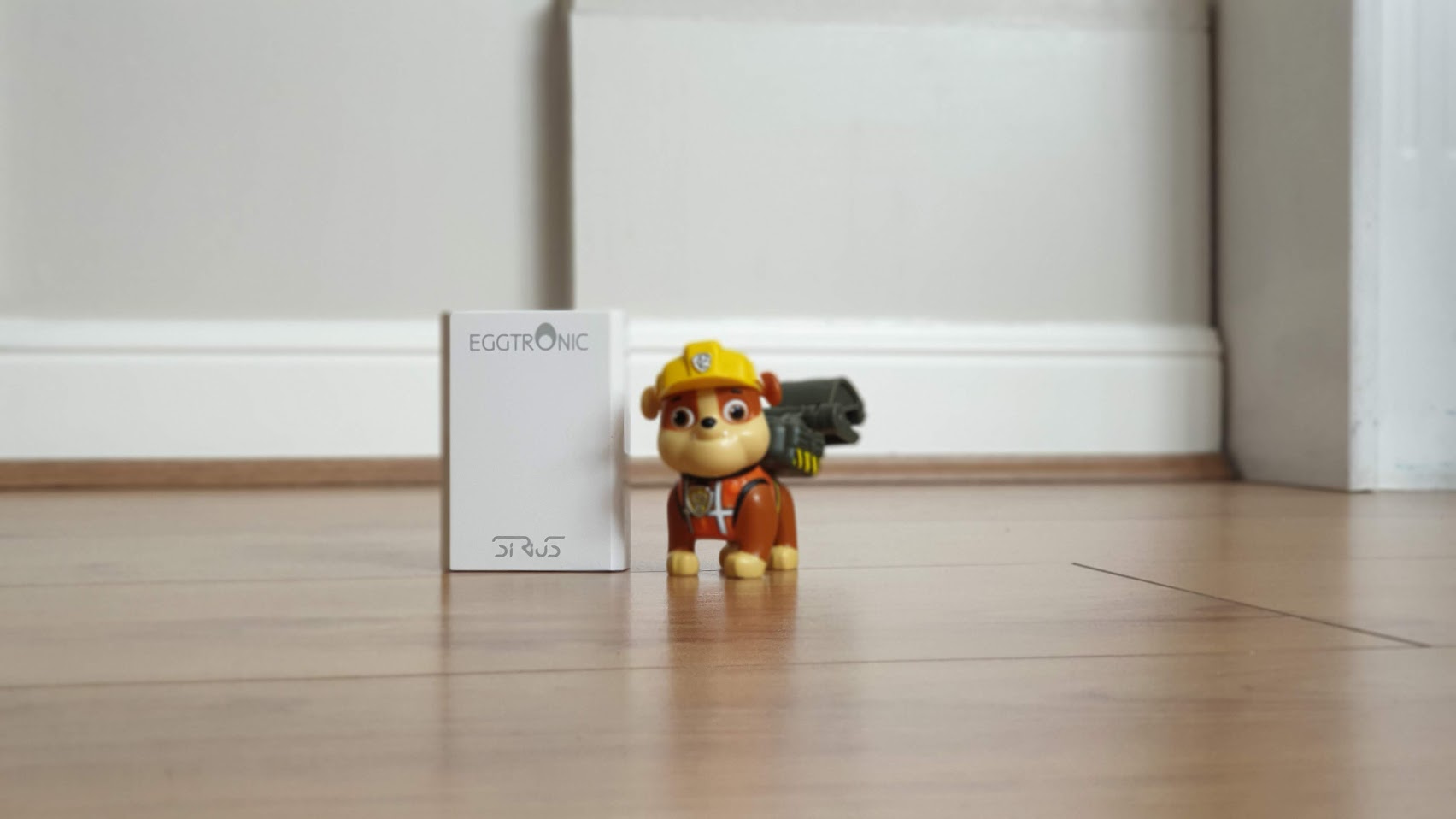
Gone are the days of packing tens of different device chargers for every trip. This attractive little piece of kit from Eggtronic allows you to charge any USB-C device - from laptops to smartphones, tablets, cameras and more.
Eggtronic describes the Sirius as the ‘smallest 65W USB-C laptop power adapter in the world’ - and we can certainly vouch for its miniature proportions. At less than 0.1kg and with dimensions of 69 x 50.5 x 19.5 mm, it’s smaller and lighter than a pack of cards.
Designed in Italy and available in black or white, the Sirius sports a sleek and minimalistic aesthetic, so it wouldn’t look out of place connected up to, say, a MacBook Pro.
It's also finished with an anti-fingerprint coating that repels both oil and water, which means your charger should retain its clean matte finish long after its initial few outings.
The charger uses a nifty automatic voltage and current detection system to ensure it’s compatible with all USB-C devices (up to 20 volts and 3.25 amperes) and is safe to use in all scenarios.
Many similar products use GaN power transistors to shrink charger size and cut costs. Eggtronic, however, uses EcoVoltas technology for an efficiency gain of 3% over other GaN chargers on the market. All in all, 93% of energy drawn from the mains is converted into device charge, which isn’t bad going at all.
The same technology ensures gadgets connected up to the Sirius remain cool while on charge, extending their lifespan to the greatest degree possible.
In terms of quality of life features, collapsible prongs mean the Sirius won’t snag on any items of clothing in your luggage as you’re travelling from A to B. The USB-C cable that comes bundled - which is an impressive 1.8m long - is also made of durable material, so you don’t have to worry about it fraying or snapping with re-use.
It's also worth noting that cable tips for not USB-C devices are available on the Eggtronic website, if you've fallen in love with the Sirius but own a handful of non-compatible devices.
Our only major gripe with the product is the price point, which sits a little above rival products at $68.99 (roughly £55/AU$105). If you’re willing to forfeit the sleek design and tiny footprint, you might want to consider a cheaper alternative.
Unfortunately, it also appears the adapter is only compatible with US wall sockets. The need for EU and UK-based customers to employ an additional converter does detract somewhat from the sleekness of the Sirius.

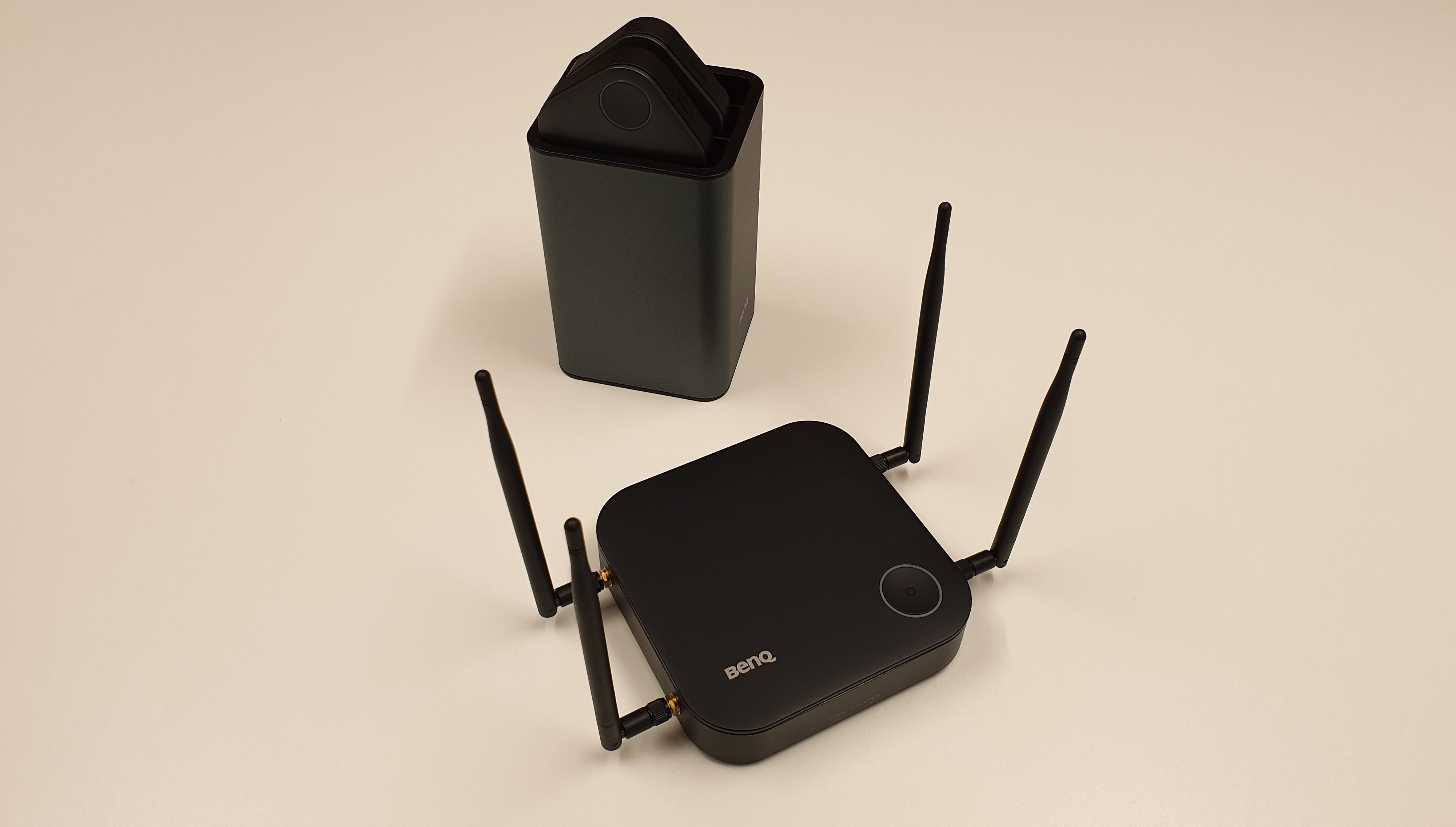
There’s nothing worse than tech trouble at the start of a big presentation. BenQ's latest device does away with software and the need for a connection, allowing presenters to hit the ground running.
It’s as simple as plugging an InstaShow Button into the presenting device via USB and HDMI, or casting via AirPlay for iOS, Miracast for Android or the InstaShow mobile app.
The InstaShow S WDC20, designed for large conference rooms, can connect to almost any device. It’s platform and OS agnostic, so notebooks using Windows, Mac and Chrome are all compatible.
It also supports 4K resolution, which is ideal for projectors and flat panel displays. Video is transmitted at a very healthy 60fps (up to 1080p) with low latency, which means no jarring screen tear or lag.
BenQ’s device can mirror the screens of up to four sources at once, so multiple presenters can contribute simultaneously. Presenters using an interactive flat panel touch screen can also annotate their presentations at the front of the room, without input into the source device.
IT departments especially will appreciate the WDC20’s commitment to security. The product operates independently of the network, minimising corporate network attack profile. It also establishes a 128-bit encrypted link before transmitting any content.
The WDC20 sports a slate grey and black colour scheme, with blue lighting around the perimeter of the buttons, making for a sleek and professional aesthetic. Provided the InstaShow Host kit is concealed effectively (e.g. under the conference table), it’s no eye sore.
On the downside, the InstaShow Buttons don’t feature a USB-C connector, which means two cables (USB 3.0 and HDMI) run into the presenter’s device. On the rare occasion HDMI and USB ports are not on the same side of the laptop, this could pose a serious issue. BenQ says USB-C will be introduced to the transmitters later this year.
The pack contains two InstaShow Buttons for connecting to devices, one cradle to hold the buttons when not in use, and an InstaShow Host which receives the signal transmitted by the buttons. It comes in at $1,499 at the time of writing.

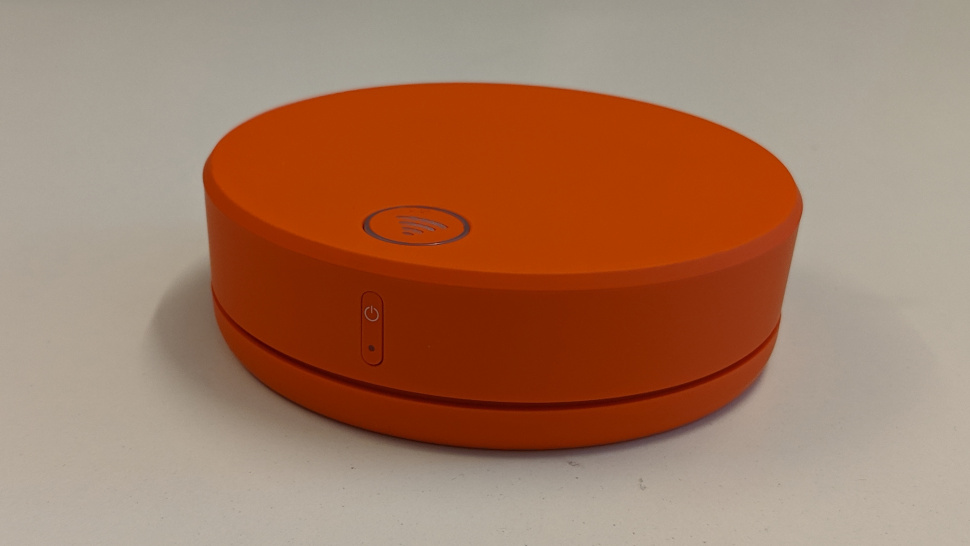
The Skyroam Solis is a palm sized, SIM-free Wi-Fi hotspot that is easy to set-up and use. There are no contracts involved, with four pay-as-you-go plans available and up to five devices can connect to a single Skyroam at once.
This means that your cost per GB remains the same wherever you go, (with a 1GB package costing $9, with options going up to 20GB ($180)) but that you don’t get any discounts for taking bigger packages. The device uses its own patented virtual SIM technology to connect to WiFi and has over 300 partnerships with network carriers around the world.
It’s especially useful outside of Europe as it saves you from having to use unsafe and unreliable public WiFi connections and running the risk of incurring huge data bills. We tested the service outside of London and got 7Mbps upload and surprisingly, 17Mbps download speeds. In comparison, our smartphone - on Three - hit 12Mbps download speeds and 2.3Mbps upload - hardly 4G speeds but good enough for most tasks.
The Solis itself resembles an orange puck and contains two batteries totalling 6Ah that can power it for up to 16 hours, as well as charging other devices thanks to a clever adaptor. Getting it up and running was easy although we would recommend you do it at home (or where you have connectivity) to avoid any data roaming shocks.
The free Skyroam app has a “smart button’” option that allows you to send an emergency SMS or an email with your current location to your friends, keep track of your location on Google sheets, tweet current location, get daily news & weather reports, locate lost gadgets and use Amazon Alexa to activate a Skyroam plan
Although there is a rental option available for $8.99 per day (it can be found at all major American airports), you can buy it outright from $150. An upgraded option is the Solis X, which boosts the number of devices you can connect (from five to 10) while adding a remote camera, smart assistant, a speaker, Bluetooth connectivity and a microphone for $30 extra.

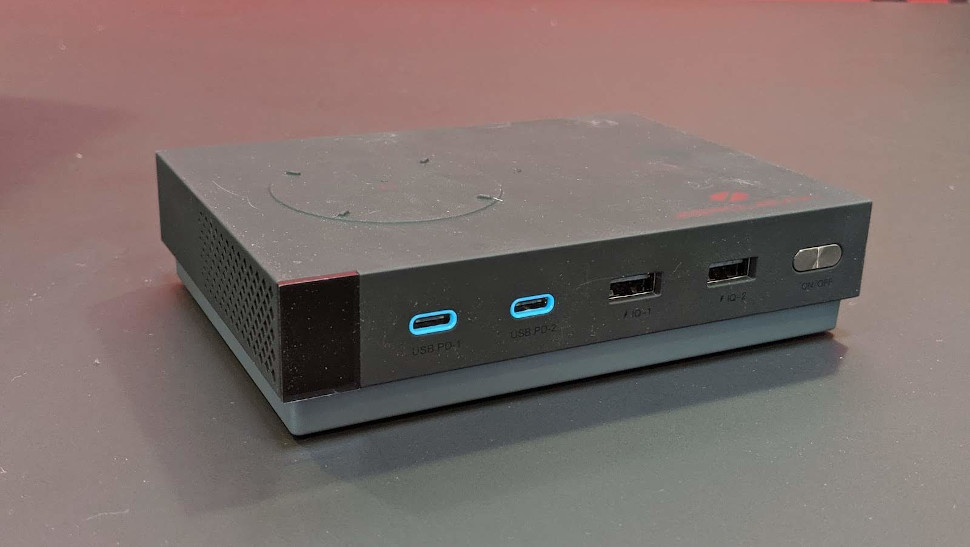
An affordable charger that can power all your devices at once and more, either wired or wirelessly, the ZeroLemon can deliver up to 135W of power through four USB physical ports - 87W Type-C, 20W Type-C, two 15W Type-A - and two wireless contact points (10W Qi charger, 3W Apple Watch charger).
A 87W charging point means that it can fully charge a 15-inch Apple MacBook Pro laptop in two hours and doesn’t require an external power supply unit.
Engineers have included temperature control management, overvoltage, overcurrent, overcharge and short circuit protection. All the ports are located at the front and other than a power button and a charge voltage indicator, the unit remains blissfully clutter-free, with plenty of holes to allow air to circulate.
The device is also surprisingly compact at 140 x 100 x 33mm, bearing in mind that it includes the power supply unit which competitors often leave out. You only need to choose to attach a power cable and off you go.
We would have loved to see a few more Type-A connectors and perhaps data capabilities, at least on one port, although this may have pushed up its price - which currently stands at a mere $59 if you back it on Kickstarter.
As always remember that all Kickstarter projects comes with a degree of risk and challenge and that you are backing rather than buying something. That said, given that we have a working product inhouse, the chances of this particular campaign not working out should be greatly reduced.

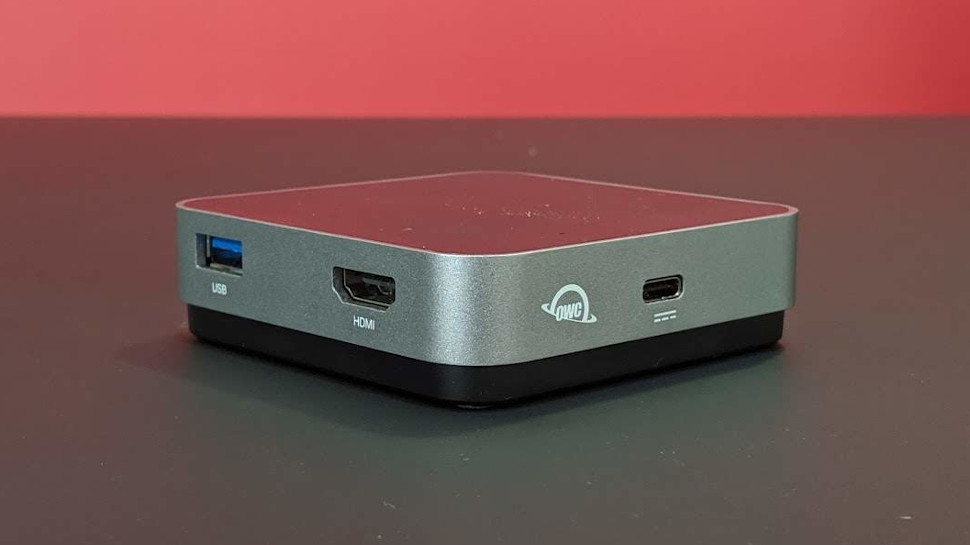
Travel docks have become more popular as laptop manufacturers continue to reduce the number of ports on their devices. There’s a lot of competition from established players (like HP or Lenovo) and new challengers (like Pluggable or Anker), but then there is this new entry from Other World Computing (AKA OWC).
The company has introduced a new “high performance workflow solution” travel dock (OWCTCDK5P2SG) which is one of the smallest we’ve seen recently, and one that comes with the all important Power Delivery pass-through feature.
This allows up to 100W of power to be delivered to a laptop or anything else that has a Type-C plug, and is an upgrade to the existing tradel dock from OWC that can only do 60W.
There’s a single Type-C connector, two USB 3.1 ports, an SD card reader and a HDMI 2.0 port. At 80 x 80 x 23mm, it is small enough to be carried in your back jeans pocket and includes a captive 15cm cable which has a groove to allow you to pull it out (and put it back) easily.
Now, you should in theory be able to connect your phone to a monitor for example although we couldn’t get it done on our Google Pixel 2XL.
Other than the two year warranty and the deliberately subdued design, the travel dock carries a price tag of $54.99 (from Macsales) and is available in space gray only. The cheaper, smaller 60W version retails for $43.88 and comes in gold, rose gold and silver as well.

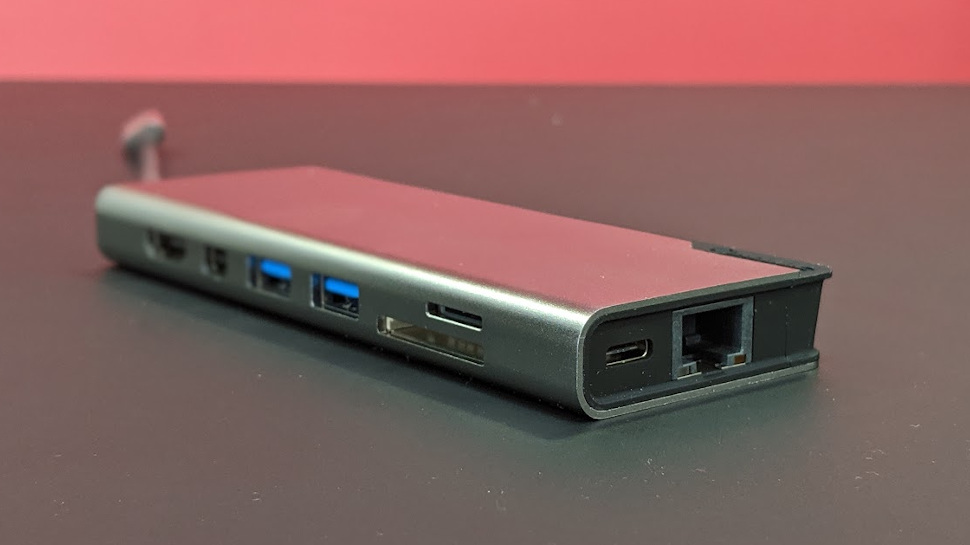
It may not be as compact as some of the competition, but the Alogic USB-C dock plus packs a big bunch with an affordable price tag. The ULDPLS-SGR, to give it its official name, retails for only $70 at Amazon and yet packs some features we haven’t found anywhere else (at least not on a travel dock).
Built from aluminum and ABS plastic, the docking station is portable enough to be shoved in your shirt’s pocket. It comes with a two year warranty and has built in technology to shield it from surrounding magnetic interference.
The Alogic USB-C dock uses the latest Power Delivery (PD 3.0) specifications to provide up to 100W of power to compatible devices which is impressive enough compared to some of its competitors. But there’s more; two card readers (although you can’t use both simultaneously), two graphics ports (HDMI and DisplayPort) which can be used at the same time albeit at a reduced full HD resolution. There’s also a Gigabit Ethernet port and two USB Type-A inputs plus a Type-C connector.
On the downside, the cable management could be better with a dedicated storage slot. We’d also love more USB Type-C connectors but other than that the dock itself is pretty much as mature as it gets. Note that a cheaper and simpler version exists, one which eschews the LAN and display port, offering a near 50 percent discount.

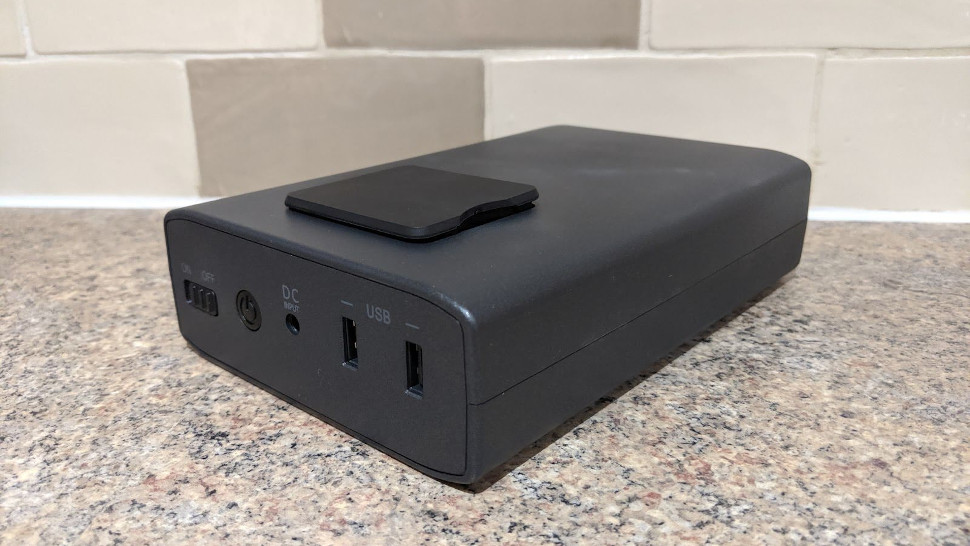
Imagine this; you are preparing to go on a weekend trip with a lot of gear that require an AC outlet. The problem is that there’s no power ports where you’re going. What’s the solution? A generator would be too big and probably too expensive - but aA battery pack like the Omars AC power bank might be the answer.
With a staggering 40.2Ah capacity, it is one of the biggest power banks we’ve seen to date, one that can power virtually every single laptop on the planet (including this Eurocom workstation).
On sale for as little as $119.95, it is actually within the limit set by the TSA for batteries on flights. External batteries can have a maximum capacity of 160Whr. The Omars AC Power Bank stands at 146Whr; note that you cannot check it in, you will have to bring it in your hand luggage.
It is about the size of a chunky bedside book and weighs just under 500g. As expected, it is jam-packed with technology to prevent it from breaking down: under voltage and over voltage protection, short circuit protection, over-current protection, AC out short circuit protection, AC out over-current protection and over temperature protection.
The electronics and a dozen of LG-built 18650 batteries are encased in a solidly built chassis and has two USB Type-A ports (sadly no Type-C)and a 2-pin power outlet (US version) or a 3-pin one (UK version), the latter of which can deliver up to 90W of usable power. Note that the device doesn’t come with any USB cables and none of the USB ports are fast-charging ones.

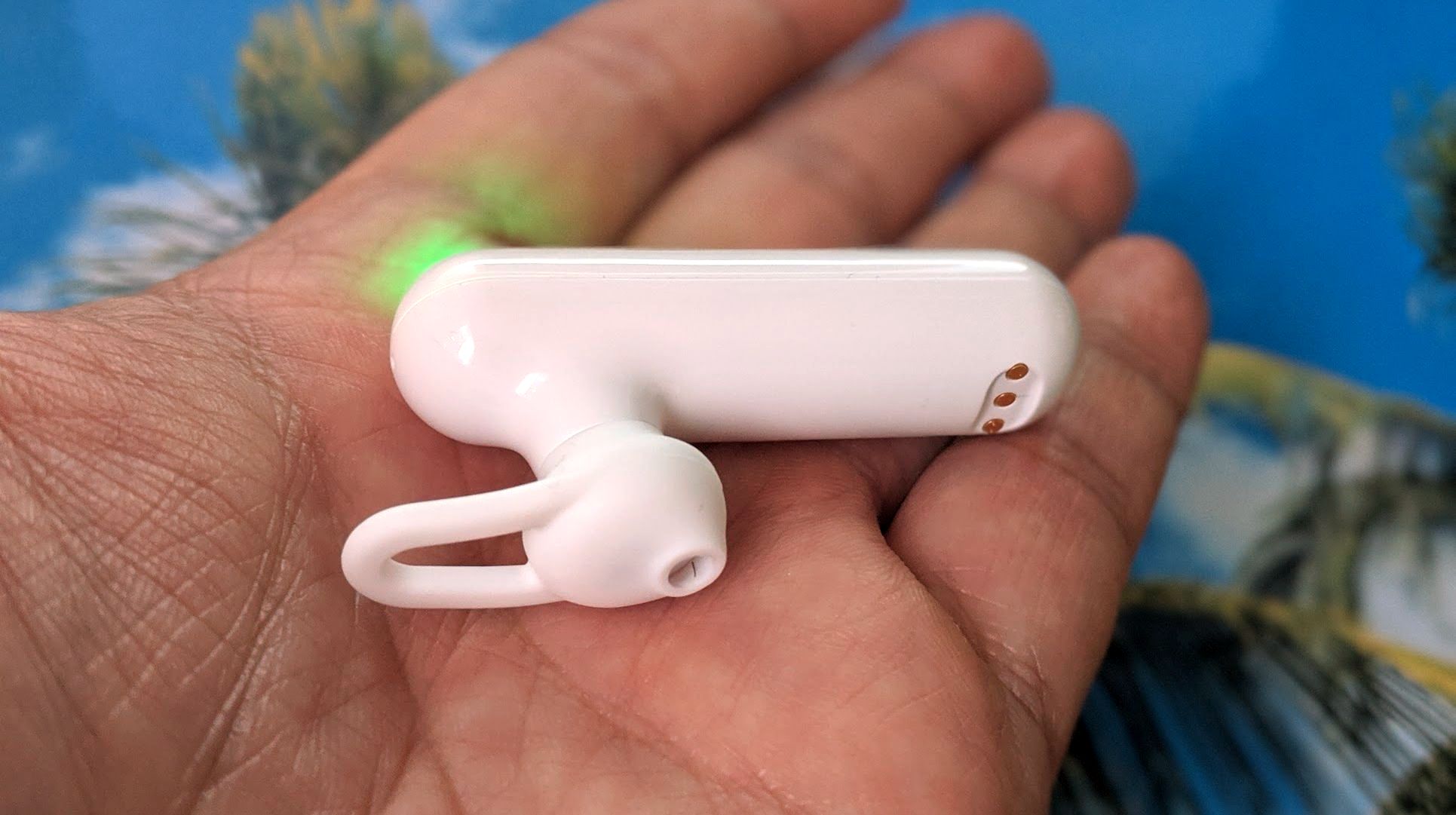
When Time Kettle approached us for a hands-on with the WT2 Plus, we didn’t have much faith in it despite it raking in more than $275,000 on Kickstarter. Billed as the first AI-powered, single-app earphone translator and capable of translating 36 languages and 84 accents in near real time (complete with written translation), it sounded (pun intended) too good to be true, especially for $239.
You get a pair of earphones (one per person) that come in an AirPod-like charger box that splits into two, with each half magnetically attached to one another. You will need the accompanying app (available on iOS as well) and internet connectivity to get it working and you get two pairs of extra ear buds and a microUSB cable for charging the case.
The earphones are relatively comfortable to wear; just bear in mind that the one with the dash on top of the indicator is for your guest. Three translation modes are available: simul mode which is essentially a normal conversation between two people speaking different languages. Touch Mode, which is akin to a walkie-talkie mode and a more traditional app based translation, great for situations where you don’t want to use the app. Note that you can't copy the translated text into another app. A shame as the WT2 Plus doesn't also integrate into any other environment.
During our brief test, the WT2 Plus performed admirably well, both in app and using the earphones. Ideally you will have a good internet connection and not a lot of background noise. Keep the phrases short as well where possible to minimize mistakes and there is a slight delay as one would expect.
However, these are minimal and, thanks to WT2 Plus’s built in adaptive noise cancellation technology, you can make full use of non verbal forms of communications (hands, facial expression and body language). We liked the fact that it integrates auto voice detection and pick up for seamless conversation.
Time Kettle says that the earphones will last five hours on a single charge with the charging case extending that to 15 hours.
The app allows you to access historical conversations and you can’t choose voice pairs and most are females for the in-app translation. We don’t know how support will be in the long run but the WT2 Plus received a firmware update during our brief testing period.
There’s no need to pass your smartphone (or translation device) back and forth (risky when the person is a complete stranger) or to ask the other person to download an app. All you need to do is put on the earpiece and speak normally. You can buy the WT2 Plus directly from Amazon. Bear in mind that you are responsible for any taxes (import duty and VAT).

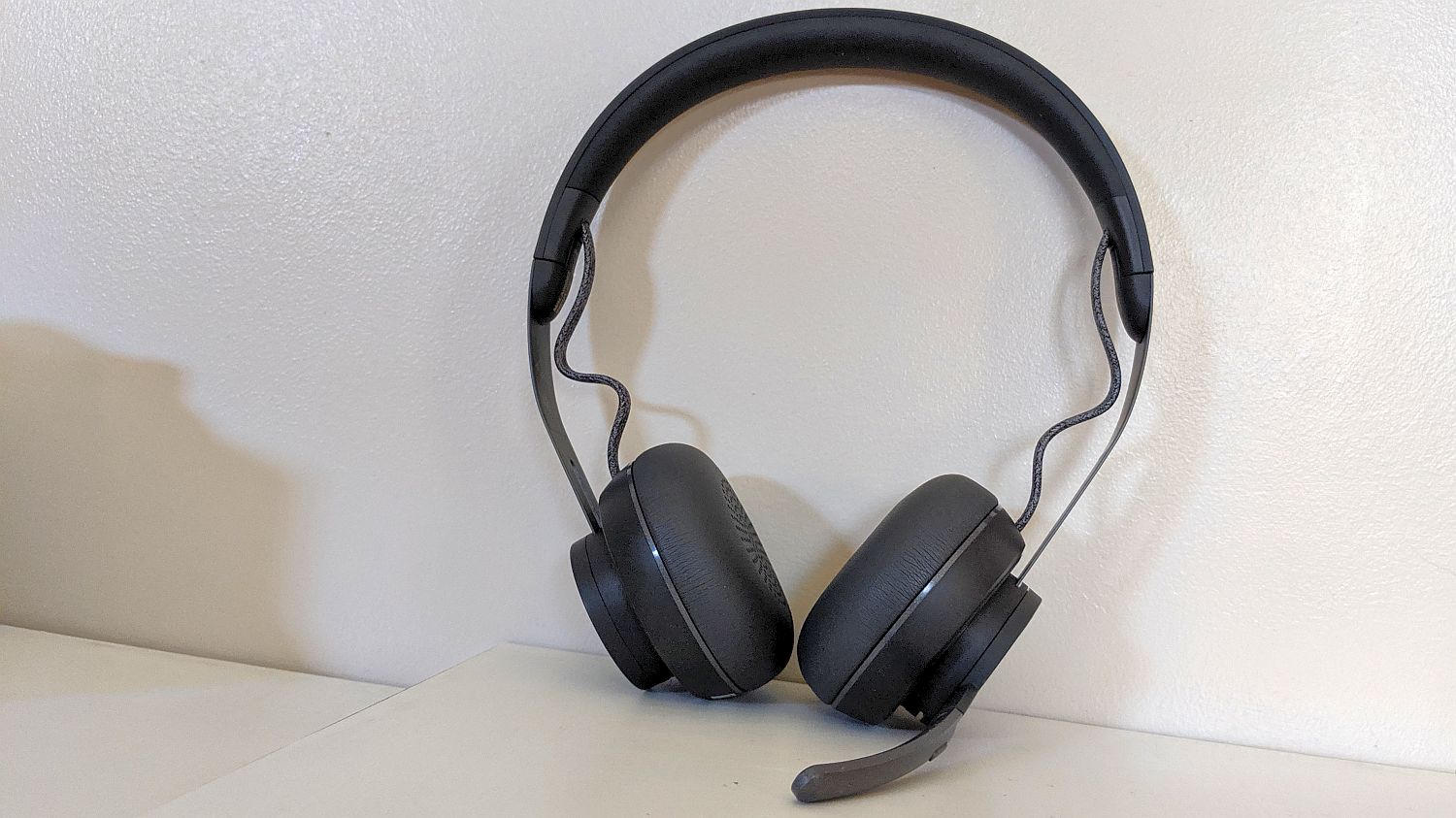
Logitech’s new wireless headphones, Zone Wireless, is aimed squarely at the office end user with a pull out microphone boom, active noise cancellation and the ability to move seamlessly between a smartphone and a computer.
At 181g, it is light enough to be carried around; Logitech provides with a soft plastic pouch; we’d have preferred something a bit sturdier given its premium price (£200). Other accessories include a USB-A dongle, a long (1.3m) charging USB cable. You cannot switch to wired connectivity should the battery run flat.
Speaking of battery life, Logitech promises up to 14 hours of talk time with active noise cancellation (ANC) on and 15 without. Listening time varies between 14 hours (ANC on) and 16 hours (ANC off). We didn’t reach those numbers. With ANC on, we topped eight hours at 70% charge (or under 11 hours 30 minutes).
Logitech also claims up to 30m wireless range (line of sight); that number depends partly on the receiving unit as well so your mileage will vary.
Controls on this premium on-ear wireless headset are kept to a strict minimum: all the controls are located on its right hand side. A white status LED shows when the Zone Wireless is connected or connecting to a device. It provides with a simple interface to adjust volume, play and pause music, start and end calls, activate/mute the microphone, plus button controls for power, active noise cancellation, and wireless Bluetooth pairing.
The headset also supports wireless Qi charging (or via a microUSB port) and comes with a handy mobile companion app (Logitech Tune) that allows you to control headset functions like mute, ANC and EQ presets as well as the side tone, which lets you hear your own voice during a conversation.
The Zone Wireless is more expensive than most of the competition but there’s a good reason; it comes with a two-year warranty and its built quality is better than cheaper models: silicone-padded headband and soft leatherette will improve your comfort over long sessions and allow your skin to breath and reduce sweating in hot environment.
ANC worked reasonably well and the audio performance of the set was subjectively good with plenty of details in the mid-frequencies but lacking when it comes to lower ones.
Not a surprise there given the nature of the product. Call quality is equally good thanks to a dual MEMS microphone array in a proper microphone boom that also uses a proprietary algorithm to filter out ambient background noise during conversations.

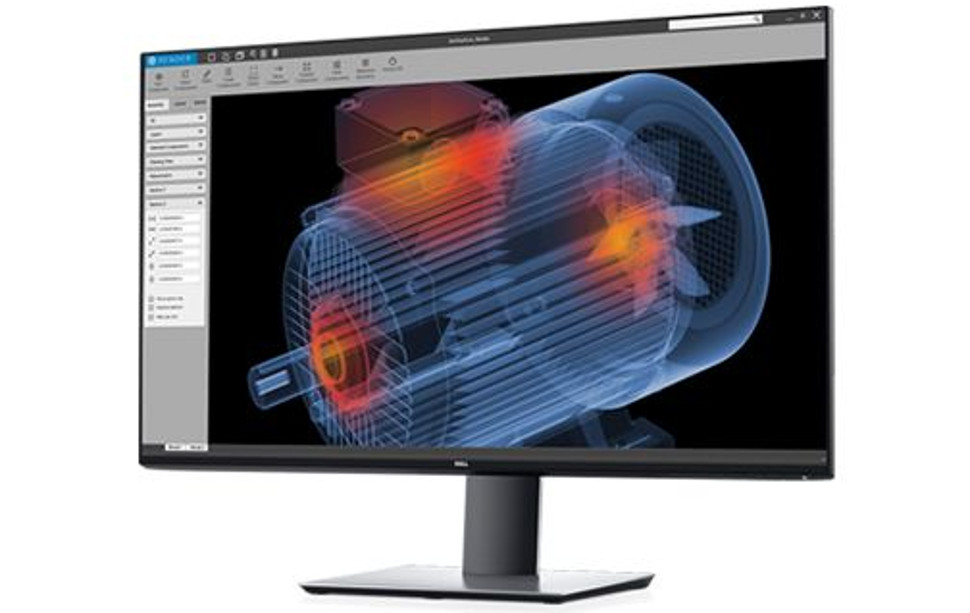
Having a great display is becoming increasingly important in many home offices, especially as more of us move to a multi-screen environment. Dell's newest 32-inch 4K monitor, the Dell U3219Q. offers a bright and vibrant Ultra HD display that is perfect not just for video or gaming, but for workplace applications such as video-conferencing and data modelling.
The unit is fairly bulky once unpacked, but when set up can be adjusted to fit a number of different space allowances, and thanks to an moveable height option, should mean it's not a strain on the eyes or neck.
The U3219Q features an incredibly useful collection of connectivity options, sporting not just HDMI, USB and DP ports, but USB-C as well, meaning it'll easily slip alongside your existing laptop or PC. The unit even ships with a USB-C and HDMI cable, meaning set-up is quick and easy - just what you need to smarten up your office.


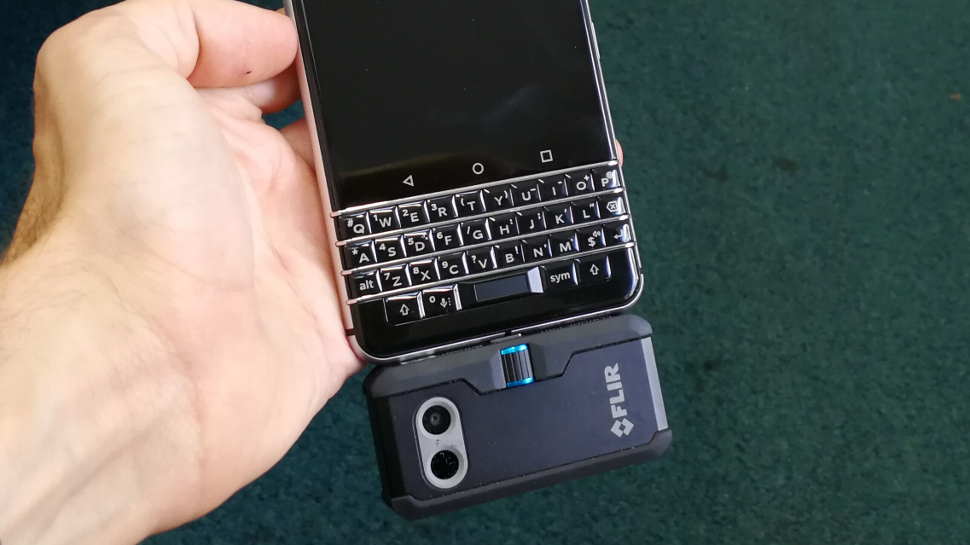
More and more industries are now choosing to use mobile devices in day-to-day operations out in the field thanks to their portability.
The FLIR ONE Pro offers a compact and powerful thermal imaging camera than can show up in-depth information about the world around you.
Attaching via USB-C, the device clips onto the bottom of your phone, acting as an extension to your normal camera, and displaying heat information on the world around you, with hotter objects showing up in brighter colours (see below).
The technology could prove incredibly useful for a number of industries, such as home inspectors looking to find insulation leaks, or electricians aiming to identify an over-heating connection.

You’ll need to download and register with the free FLIR ONE app in order to start using the device, which is an unneeded extra step for many, but does grant you access to the company’s helplines, galleries and app store.
The actual app was often slow to recognise when we had the device plugged in and turned on, however, and sometimes failed to detect it at all, which was slightly annoying for us, but for a worker in the field could be a major hindrance to getting your work done.
Once you do get it up and running, however, the FLIR ONE Pro’s VividIR imaging system reveals a wealth of information on the world around you, and the compact build and design means it’s easy to carry around (although could also make it easier to lose in a crowded toolbox as well….)
Battery life is also not very long, with our tests only finding the device lasting just over an hour, although re-charging was a speedy process. If you’re out working in the field with a cable though, this could be a major downside.
The FLIR ONE Pro also doesn't come cheap, costing £349.95 in the UK, but it could prove invaluable for workers in such specialised areas, and is definitely worth your consideration.

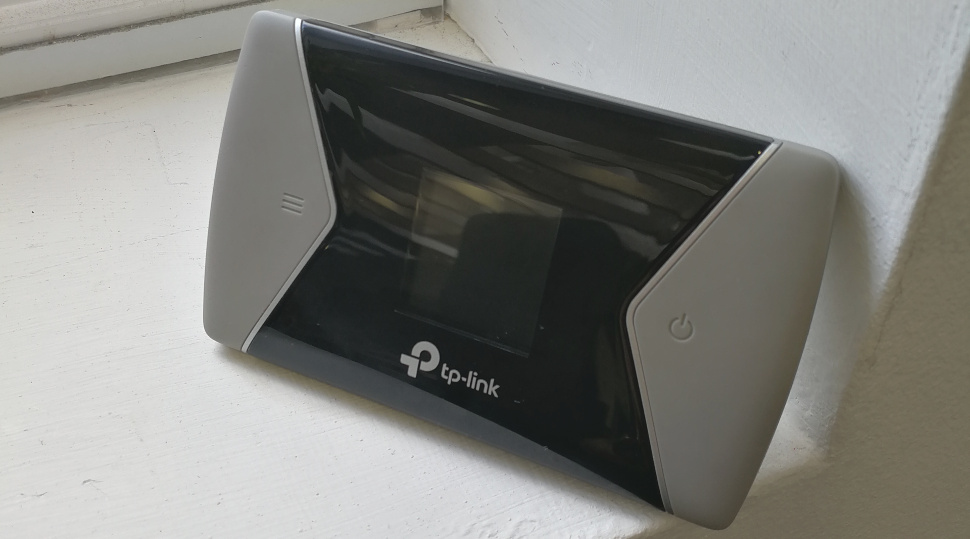
TP-Link says that the M7650 is the fastest Wi-Fi router it has ever made, offering speeds of up to 600MBps, which is easily enough to stream video to your laptop or tablet whilst on the move, as well as high-quality VoLTE audio through your phone - useful if you don't want to miss that conference call.
Our tests found that the device often reached speeds of over 500MBps, which is impressive for central London, and more than enough to enjoy reliable connections whilst on the move.
The M7650 can support up to 32 devices at once, meaning you can set up multiple connections around the home, or even in a small office if needs be - although speeds will drop if you do so. Set up is remarkably easy, requiring you to just insert the SIM card and turn on, making this much more straightforward than other similar devices.
Battery life for the device was excellent, lasting a full working day with ease, as TP-Link says that the M7650 can offer up to 15 hours of juice, and recharging the huge 3000mAh battery is also quick and easy using the microUSB port.
The M7650 is also light and portable, being small enough to fit inside a jacket pocket, and its rubber build will help protect from any accidental drops or bumps.
However buying the device in the UK is a bit tricky, as you'll have to go through a reseller. This means you'll also need to be on the lookout for differing price options, but if you get the right deal, the M7650 is a must-have.

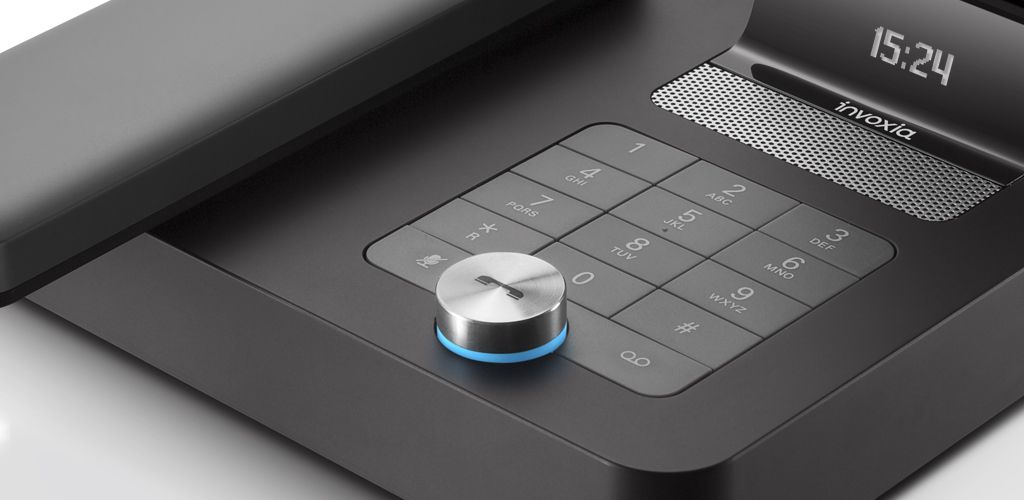
We love our smartphones so much so that we carry them all the time even at our work, prompting businesses to consider shedding regular landlines and simply embrace the BYOD (bring your own device) paradigm.
Which is why it is so surprising that few companies have come up with a product like the Invoxia NVX200. In a nutshell, this £209 device converts/transforms your smartphone into a desk phone with a Bluetooth speaker and a charging dock thrown in. It comes with a bunch of connectors and adaptors to connect most smartphones.
Most Apple devices (including the iPod, iPad and iPhone) are supported, as are the latest Android smartphones, thanks to a USB Type-C port. A clever adjustable stand means that any device will sit snuggly on the NVX200. Connect the device via Bluetooth to the latter, put your smartphone in place and you’re ready to go.
Hold down the voicemail key bring up the settings and you will be able to configure the device to your taste, down to the ringtones. Outwardly, it looks just like a normal desk phone, with lots of curves, a soft surface and a handset with a cable that’s sufficiently long for the user to stand up. Setting it up is straight forward: connect the device to a power socket, dock your smartphone, connect it to the NVX200 via Bluetooth and you’re ready to go. We did encounter some issues though.
The test smartphone, a Sony Xperia Z3, has a micro USB port located on the side rather than at the bottom of the device. To make matters worse, it is not anywhere near the middle which makes it impossible to dock in landscape mode. Things got a bit more complicated when you factor in the casing used to protect it.
Altogether a wireless solution, which integrates no-wires charging, might have been a better solution but would have restricted its appeal. We couldn’t get the speaker to play music wirelessly but it did somehow play music via the micro USB connector but only, and only if Bluetooth is disconnected.

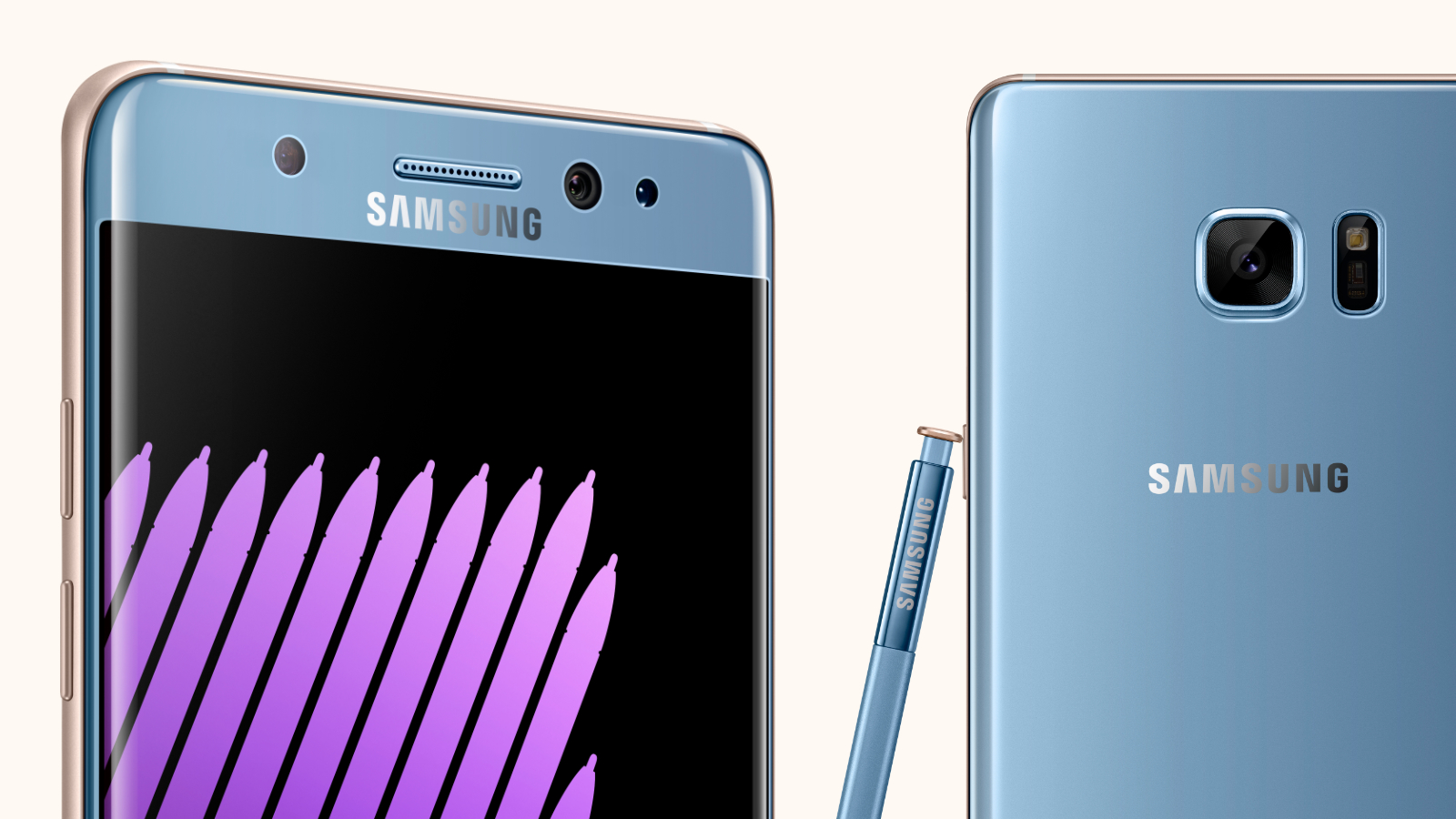
Fed up with losing your connectivity when out and about? Then check out the Multivox Multisim. It is a service that allows access to multiple UK mobile networks from a single SIM card.
No need to swap tiny pieces of PCB or opt for a sub-optimal dual-SIM smartphone to eliminate the issues associated with poor connectivity, especially when you are out and about. The technology works on almost any recent smartphones and feature phones and doesn’t need a dedicated app.
If there is no coverage on the primary access network, then your phone will search for another available UK mobile network and if there is one available, it will connect to it. If there are multiple networks available, then it will pick up and run on the network with the strongest signal.
The Multisim works without having to manually select a different network to switch to and you get to keep your phone number regardless of the network. The only caveat is that a call will drop when the network being used loses coverage altogether; there is no “incall” switching.
You get unlimited UK calls to mobiles and landlines as well as unlimited texts, all courtesy of EE’s network. Four data packages are available, ranging from 2GB (£29.40) to 10GB (£41.90) excluding VAT. The packages can be configured at Immervox.

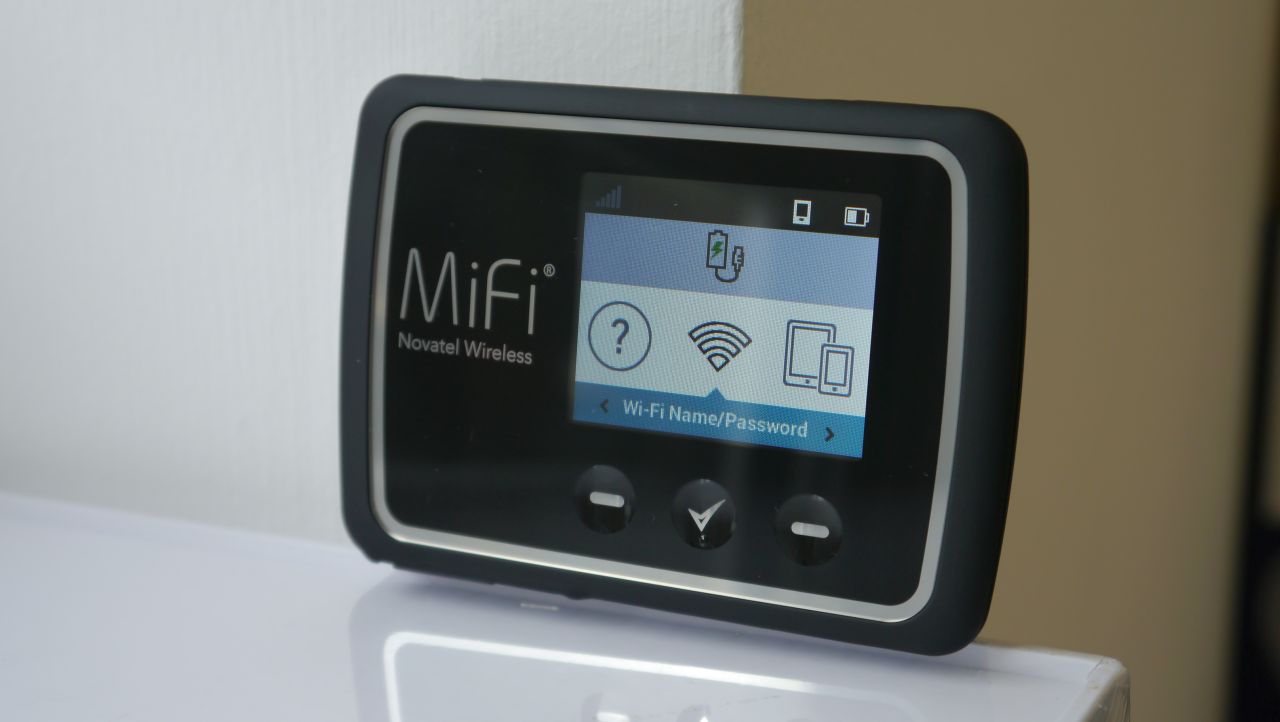
There are a fair few solutions available for digitally-savvy globetrotters looking who whiz across the globe for leisure or pleasure. We might have uncovered one of the best ones yet.
From Knowroaming comes a global hotspot that uses a Novatel Wireless Mi-fi, the 6630, and can connect you up in more than 140 countries with 92 of them offering unlimited data for a flat fee of $7.99 per day (about £6.40), a price that even include free, unlimited Whatsapp.
We tried it during a recent trip to Japan where the cost of connectivity is prohibitive and international data roaming is a no-no unless you want to spend hundreds. The Mi-fi device comes in a nice pouch with a few accessories; we just took it out and used it for a few days. It is sturdy enough to withstand a few knocks.
The 6630 is about the size of a Tic-tac box and its user interface is intuitive with only three buttons and a small screen on its front. On top is the power button as well as two USB ports, one for charging up and the other to provide power to external devices.
Inside the 6630 is a 4,000mAh battery that can power the device for up to 20 hours. It is compatible with Cat4 LTE although KnowRoaming only supported 3G for now and an LTE offer is in the pipeline. In use, the service was as seamless as it could be.
Switch it on and connect to it using the provided login details. Note that you can’t change these from the device itself; that can only be done by accessing the device via a browser. Various options exist on the Mi-fi device including the ability to set a number of restrictions, the ability to view your consumption, the number of devices connected at any time and the battery life left. The 6630 supports dual-band 802.11n Wi-Fi but no 802.11ac.
Since this is primarily marketed as a business device, it comes with a number of security features including VPN pass-through, NAT firewall, security hardened web interface, Anti-CSRF (Cross-Site Request Forgery) and session timeouts. Sadly though you won’t be able to buy a consumer version of that yet. Instead, the device is only being sold to corporates for $199 (about £160) with discounts being offered for multiple purchases.
As it stands, the service is meant to be managed centrally by an administrator or IT manager with an entire backend, cloud-based infrastructure provided by KnowRoaming. Suggested improvement to the Mi-fi device would include a thinner, more pocketable model, support for 802.11ac, the inclusion of a microSD card reader and having a smartphone app to allow you to access admin essential information from your smartphone, rather than through a browser.
Find out more at Knowroaming

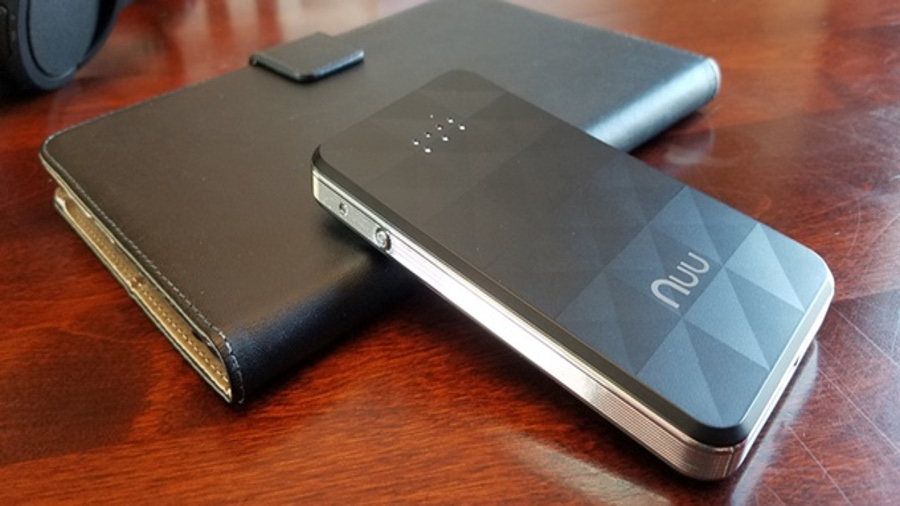
If you've ever been stuck for mobile signal when travelling to a new country, then the NUU Konnect i1 could be the gadget for you.
Able to provide 4G connections in over 100 countries, the i1 looks to offer a simple, portable way to get online wherever you are in the world.
Most current mobile hotspots are only able to connect to 3G networks, so the Konnect i1 already has an advantage there, thanks to its LTE Cat 6 Qualcomm modem.
The device supports VPNs and Wi-Fi calling, and is equipped with LTE bands 1/2/3/4/5/7/8/17/20/39/40/41, meaning there's a wide range of possible connections.
NUU Mobile says that it is trying to target frequent travellers with the Konnect i1. The device itself is small enough and light enough to easily slip into your pocket, and is able to power up using its microUSB port.
Setting up is easy enough, with the capacity to connect up to five devices at any one time.
What's more, you'll only play a flat rate of $10 a day to use the device as much as you want, with no contract or sign-up fees.
However, after the first 500MB of data, you'll be dialled back to HSPA+ networks for the next 500MB you use, and then down again to just 128Kbps speeds for anything more than that, unless you spend more for further LTE usage.
For the moment, you can only get hold of the Konnect i1 if you backed the product on Kickstarter, with news of a wider release not available just yet.

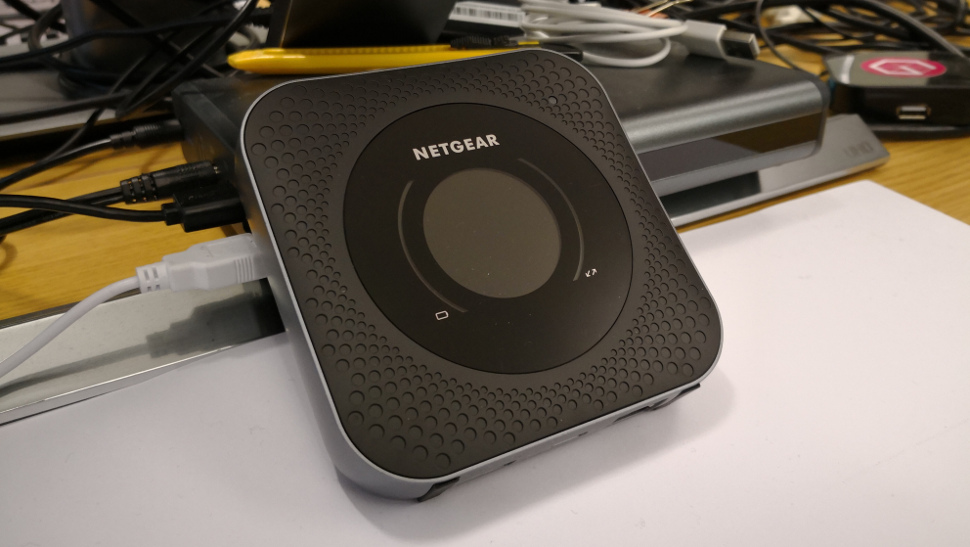
Staying online when working on the go has become an incredibly important issue for all mobile workers, as an unreliable connection can be a disaster.
Netgear is looking to solve these worries with its new Nighthawk M1 mobile router, which it says is the company's fastest yet. Capable of supporting Gigabit LTE speeds, the Nighthawk M1 uses four-band carrier aggregation and Qualcomm's Snapdragon X16 LTE modem to support mobile downloads of up to 1000MBps, as well as uploads of up to 150MBps. Our time with the device found the actual speeds to be fractionally lower, however streaming and uploading were both fast and reliable, both at home and out and about.
The Nighthawk M1 is slim and lightweight, meaning it can be easily carried around in a rucksack or messenger bag. Netgear says that the battery life of the can last 24 hours, and our tests found it comfortably survived a full working day. Set-up is a quick plug-in process, with no external software needed, and the device can even use its USB connectors to charge your mobile device.
In the UK, the Nighthawk M1 can be purchased from Amazon for £299, or via pay-monthly contract with BT or EE. Both options are fairly pricey, with EE offering the device for £29 a month for 24 months after a £99 upfront payment, but if you're looking for fast and reliable connections, this device is ideal.

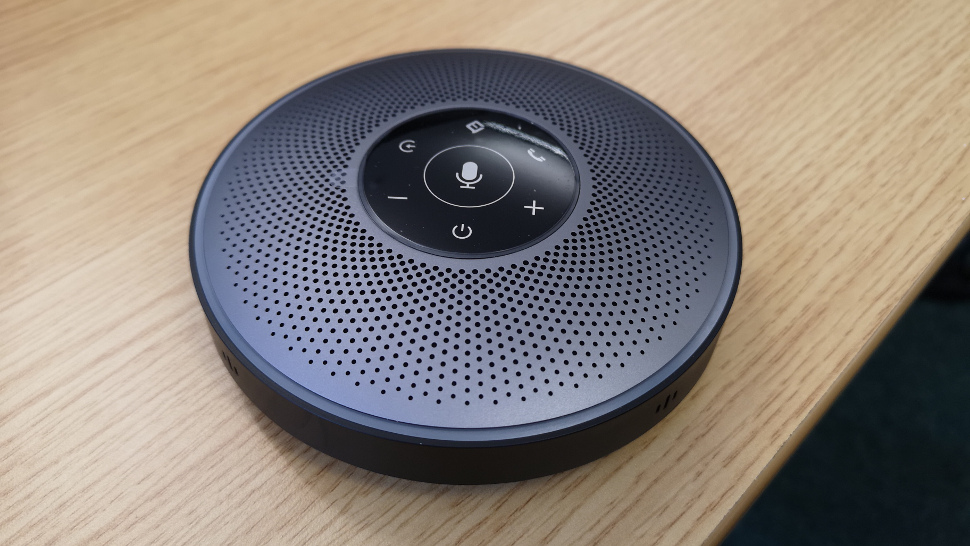
With conference calls becoming an increasingly common part of modern business life, the need for reliable hardware to support this is greater than ever. The OfficeCore M2 is the latest release from Chinese firm EMeet, and looks to provide a smart and stylish way to make sure your calls go off without a hitch.
The OfficeCore M2 offers 360-degree voice recognition thanks to a number of embedded microphones, supporting a range of up to 26 feet away, with the company adding that should support calls with up to 12 people without interference. The device can also link to mobile smart assistants to facilitate greater communication, with Siri, Cortana and Google Now all supported via Bluetooth, although our tests found that this was often patchy to set up.
The major selling point of the OfficeCore M2 is its portability. Equipped with a 2500mAh battery that should easily last through even the longest conference calls, the device can quickly be picked up and carried around in a shoulder bag or rucksack. At $189, it's not the cheapest speakerphone on the market today, but if you're in the market for a device that can easily be taken on the go, this could be the one for you.
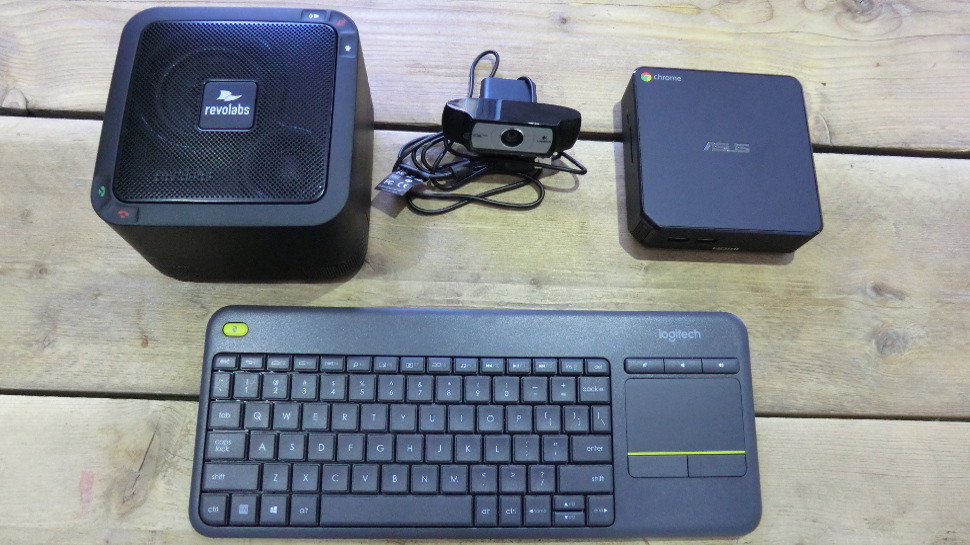
If you've just started your own business, or need to work from home often, having a flexible and reliable technology set-up should be one of your top priorities.
In order to keep you from wasting time setting up complex systems, teleconferencing experts GoToMeeting have you covered with an all-in-one box of tools that should allow you to get up and running quickly.
The pack contains an Asus Chromebox PC, Logitech wireless keyboard, Logitech 1080p HD webcam and a FLX UC 500 conference phone from Revo labs - pretty much everything you need to get started.
The products have all been specially selected to work seamlessly together, meaning most of the usual set-up process can be sped through quickly and easily - even if you're not particularly tech-savvy.
Setting up your new kit can be done in a matter of minutes - all you need is a monitor to hook the PC and webcam up to, with all the rest of the hardware able to just plug and play.
The tiny Chromebox PC is incredibly powerful for something so small (at just 12.4cm wide and 4.2cm tall), coming with a powerful 1.7Ghz processor, 4GB of RAM and 16GB storage, making it a great choice if you are strapped for space in your office. The PC also features 4 USB ports alongside DP, HDMI and LAN connectors, offering everything you should need to get started.
Space saving is also helped by the Logitech wireless keyboard, which connects to the Chromebox via USB tracker, and also includes a trackpad in place of a mouse. If you do prefer using a physical mouse, you'll have to splash out on a separate piece.
All the devices work together quickly and easily, meaning you'll be able to start working, calling and even videoconferencing in no time. The webcam is once again surprisingly powerful for its size, offering a smooth video experience, although we did see some slowdown in some cases.
The only minor downside is the need to buy the entire package, meaning that if you only need a conference phone, or a compact PC, you may be better off buying these separately.
At the time of writing, the kit is only available to buy in the USA, costing $999, with a subscription fee of $99 a month, making it a fairly pricey proposition - however if you're already an existing GoToMeeting customer, it can be built into your current subscription.

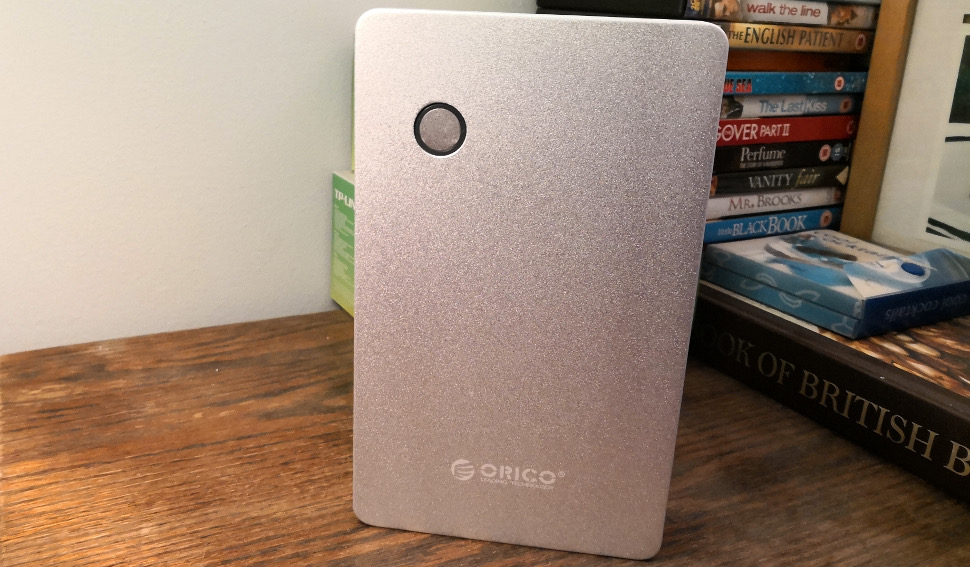
If you're someone who travels for work a lot, staying powered up on the move may often prove a challenge. Although power banks for mobile devices have been popular for some time, anyone looking for a laptop equivalent could be caught short. However Orico's new SC28 offering provides a huge capacity that should be perfect for staying charged up on a trip. With a capacity of 28,800mAh, the SC28 provides easily enough juice for even the thirstiest laptops, which can be quickly recharged via USB or power socket.
The latter features a number of adaptors for different markets, meaning you should never be caught short, with Orico promising five hours of life for a 13in laptop. The SC28 can charge up to three devices at once, meaning you can power your laptop, phone and router all at once for the ideal mobile working solution. The device itself looks stylish, with a sleek aluminium alloy body that weighs in at just under 1kg, but should still easily slip into a rucksack or laptop bag.

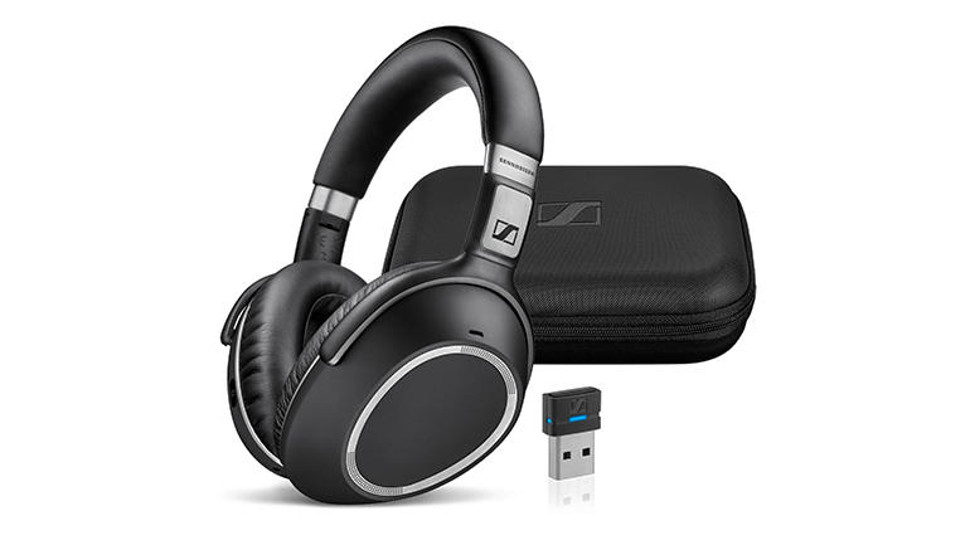
In modern busy offices, it can be tricky to get some quiet - particularly if you’re trying to carry out a conference call or video meeting from your desk. Sennheiser, which is perhaps better known for its consumer headphone line, is looking to address this with a new headset targeted at business customers.
The MB 660 may resemble normal ‘cans’ style headphones, but in fact can act as a Bluetooth-enabled wireless headset, allowing you to use them as a meeting accessory in today’s UC-dominated workplace.
As you would expect from a brand such as Sennheiser, the audio quality is excellent, whether that’s with a voice call, watching video or even listening to music. This is complimented by the noise-cancelling ability of the headset, which comes with three separate settings that allow you to select your level of isolation. This high-standard audio quality does come at a price, but if you value your calls and media, it may be worth shelling out.
The headset comes with its own stylish and compact carry case, which also house the charging cables and USB connector. Battery life was excellent, with the headset not needing a recharge during our week-long test - and when we did plug it in, recharging was quick and effective.

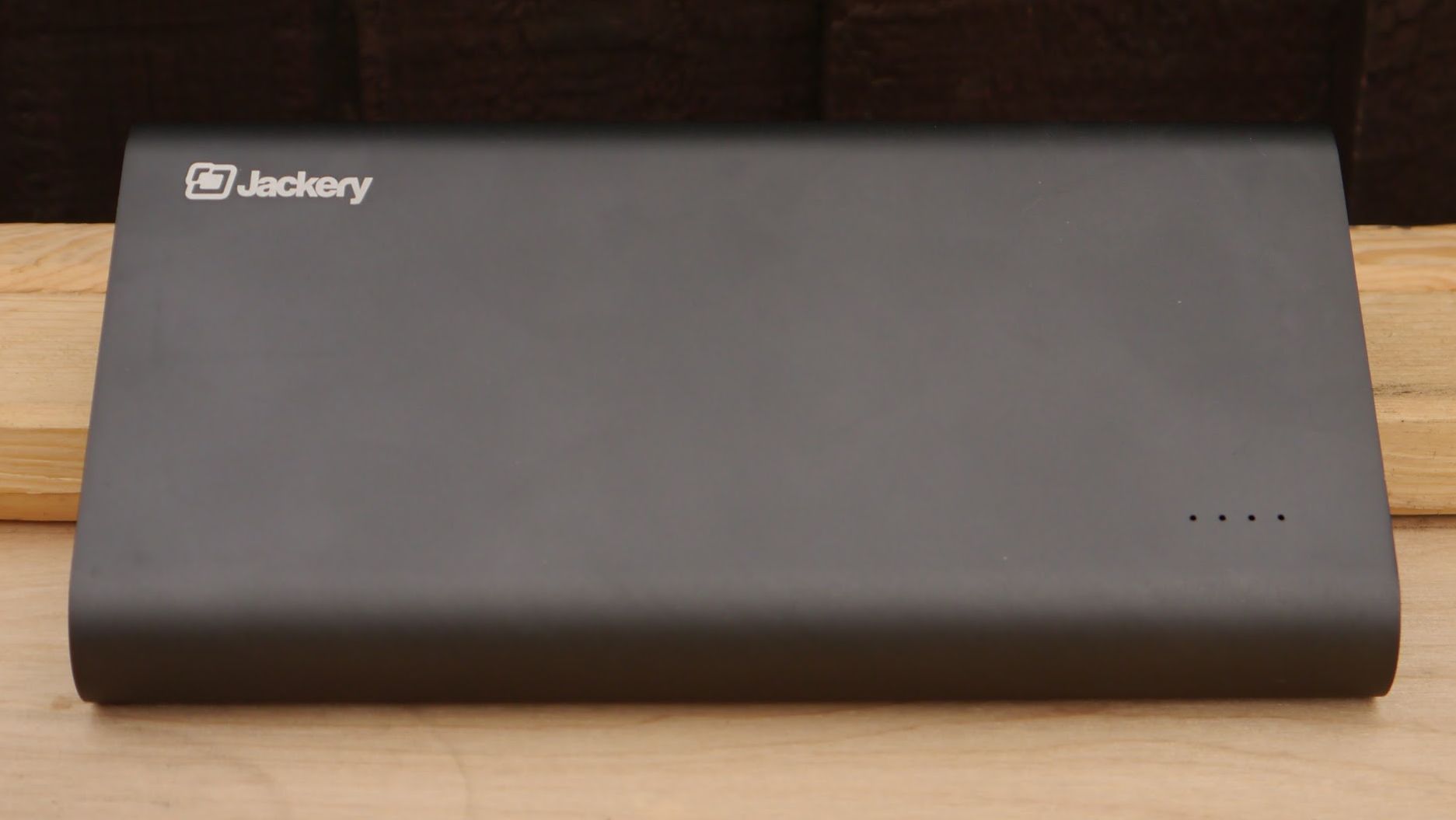
Jackery is a little known company that focuses - like so many out there - on producing portable laptop and smartphone chargers. Its flagship product is the massive PowerPro, a 500Whr/140Ah Portable Power station rechargeable battery pack, The Jackery Titan S is a portable battery (72.4Whr) that can not only charge your mobile or tablet but also, according to its manufacturer, the popular Apple MacBook laptop.
We didn’t have one at hand to test that claim sadly; note that it is also available in orange which for some reason has a lower capacity. Its black metal aluminium casing ensures that it will survive more than a few drops and it does feel very solid. Shame though about the sharper-than-usual edges on both sides and we’re not fans of the curvy profile of the Titan S as this caused it to slip a few times.
This is a portable charger/battery pack so don’t expect too much innovation; it doesn’t switch off automatically but does identify the connected device by itself, charging it at the maximum permitted power.
Other than a big power button and a 4-led battery status indicators which means you will never really know when the item will be fully charged when you reach four blue dots or discharged when it shows one blue dot.
There are two full size USB ports - a 15W one (5V, 3A) and an 18W one (supporting variable voltages thanks to Quick Charge, up to 3.4A) - and a USB Type-C one that can deliver 15W power (5V, 3A); the latter can also be used to charge the battery.
At 155 x 80 x 22mm for a weight of 435g, it is a tad smaller (volume wise) and lighter than the Aukey Powerbank although the latter has a far superior capacity (30Ah compared to 20.1Ah). The Jackery Titan comes with a micro USB charging cable and a two-year warranty but no carry case. The item is out of stock in the UK at the time of writing.

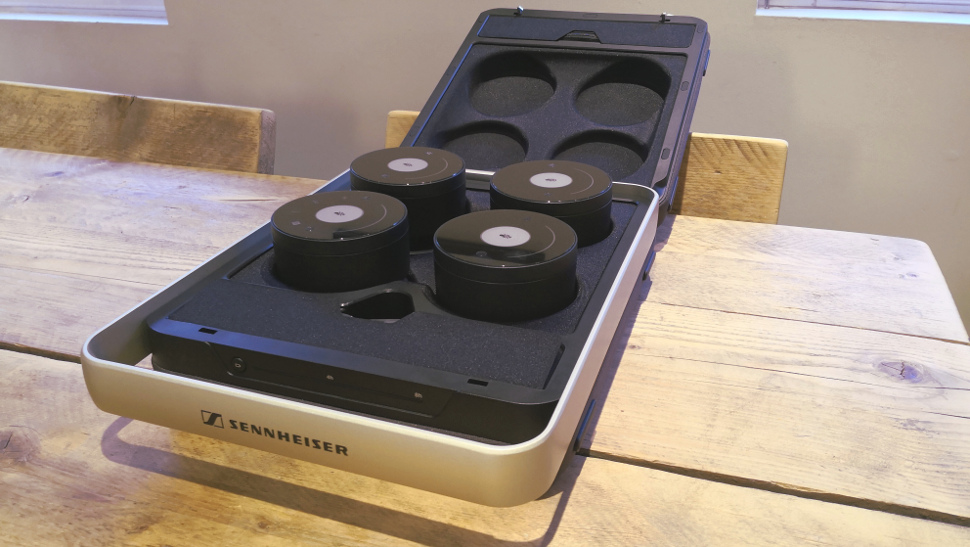
Many of us know the pain of conference calls being ruined by poor connection or call quality, and with many businesses today choosing to embrace mobile working ideas and services, the need to stay flexible yet connected is paramount.
Sennheiser is looking to solve these woes with its ultra-mobile TeamConnect Wireless - in essence a portable conference room, which can be packed up and carried around for workers on the go. Made up of four speakers, all carried around in a stylish case which doubles as a charging hub, the system can be connected to any laptop, smart device or VC system via Bluetooth, USB or 3.5mm jack.
Set-up is quick and easy, allowing users to get up and running in a matter of minutes, with Sennheiser saying the kit can support up to 24 participants at once. Our tests showed the audio quality to be very effective, even with multiple participants on different lines, with no connectivity issues.
The ultra-portable design of the TeamConnect Wireless is the major selling point here, as the stylish case is able to charge up the speakers to ensure you're never caught short, and takes up less space than a rucksack.
However this stylish product doesn't come cheap, costing £3,940, meaning it may be out of the price range for some SMBs. For those that can splash out though, this is an eye-catching piece of kit that allows you to stay connected and conversant with your team or customers wherever you are.


Offices can often be noisy places to work, so if you are looking to cut yourself off from the world around you, Jabra's latest Bluetooth headset could be the answer.
The Jabra Evolve 75e is the company's latest attempt to help boost the productivity of office workers everywhere with a comfortable headset that offers long battery life and stylish design.
Jabra says that the Evolve 75e are the world’s first professional UC-certified wireless earbuds, making the device ideal for carrying out external or conference calls wherever you are without the need for tangled phone wires or complicated UC set-ups.
Set-up is simple, as the headset connects to your smartphone, laptop or desktop via Bluetooth and a USB plug-in. There's no need to download any extra apps or services, meaning you can jump on calls right away. The sound quality was excellent, with the buds cancelling out the noise of an active workplace, and the in-built microphone able to deliver a clear input.
The only issue we had with the Evolve 75e is that Bluetooth connectivity would occasionally drop for no apparent reason, but with the compact design and long battery life (Jabra promises up to 14 hours) provided, this seems like a minor hiccup.
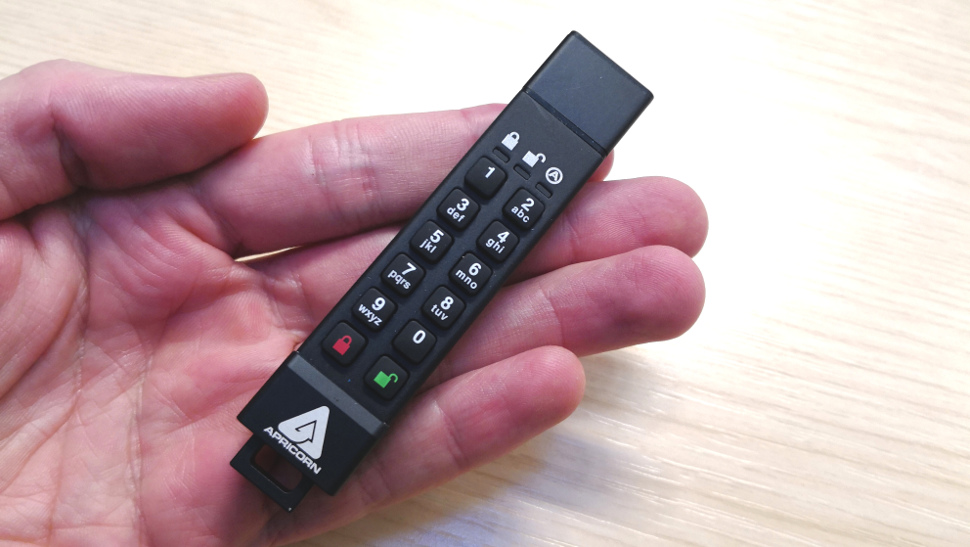
Keeping workplace data safe is a major consideration for many workers, and the Aegis Secure Key 3Z features one of the toughest alternatives around.
Primarily targeting those workers who are out and about a lot, and also want to keep their valuable information secure, the device is equipped with a physical keypad to protect what's inside.
Despite only being the size of a regular USB stick, the Aegis Secure Key 3Z is one tough cookie, able to stand up to almost any work environments. The rubber exterior, which is IP58 protective against dust and water, safeguards a rugged aluminium build inside and out, meaning that there is no easy way to break into this device.
The Aegis Secure Key 3Z also features top-of-the-range encryption that meets government standards alongside the onboard keyboard to enter a custom PIN and access the data within. Despite all this protection, setting up and using the device is fairly straightforward, not requiring any extra software or complex processes, with all the protection contained within.
In fact, the only downside appears to be the high price - at $79 for the 8GB model we reviewed, this is a far pricier alternative than other devices around today. But if security is your number one concern, then this is the storage device for you.

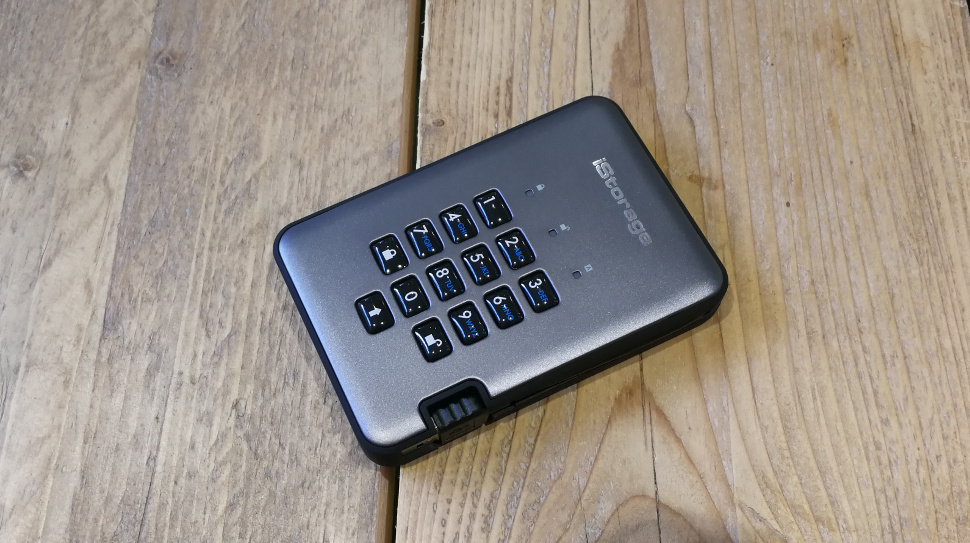
With data security becoming paramount for many of us these days, the diskAshur Pro looks to offer a comprehensive security offering to ensure your important data stays intact.
The key selling point of the diskAshur Pro is its obvious physical security - the device comes with a keypad that will only grant access to the data stored within upon entering a PIN number. Far from your usual ATM PIN number though, the device requires an identifier between seven and 15 digits, offering far tougher security, with the number able to be quickly personalised and changed, in order to keep your data safe.
Asides from the physical security (which extends to IP56 water and dust resistance and even a self-destruct feature), the diskAshur Pro also comes with some enviable encryption, sporting XTS-AES 256-bit real-time full disk hardware encryption and EDGE technology to offer even more levels of safety.
This version of the drive offers 500GB of storage, which should easily be enough to store all your vital documents, media and more, and connects to your PC or laptop via a standard USB 3.1 port.
The diskAshur Pro works across all major operating systems, including Windows, Mac, Android, iOS and Linux, and requires no extra additional software to be installed, meaning using the device is incredibly easy.
Getting hold of the product may be the main issue with the diskAshur Pro, with the company manufacturing and selling many other models of the device on its site. We found this particular model for sale on Amazon for £211.96, and on iStorage's own site for £209.
If you are able to get one, however, the diskAshur Pro is unparalleled in both its physical and internal protection, and the compact build and hard-wearing design make this a must-have for the security-conscious.

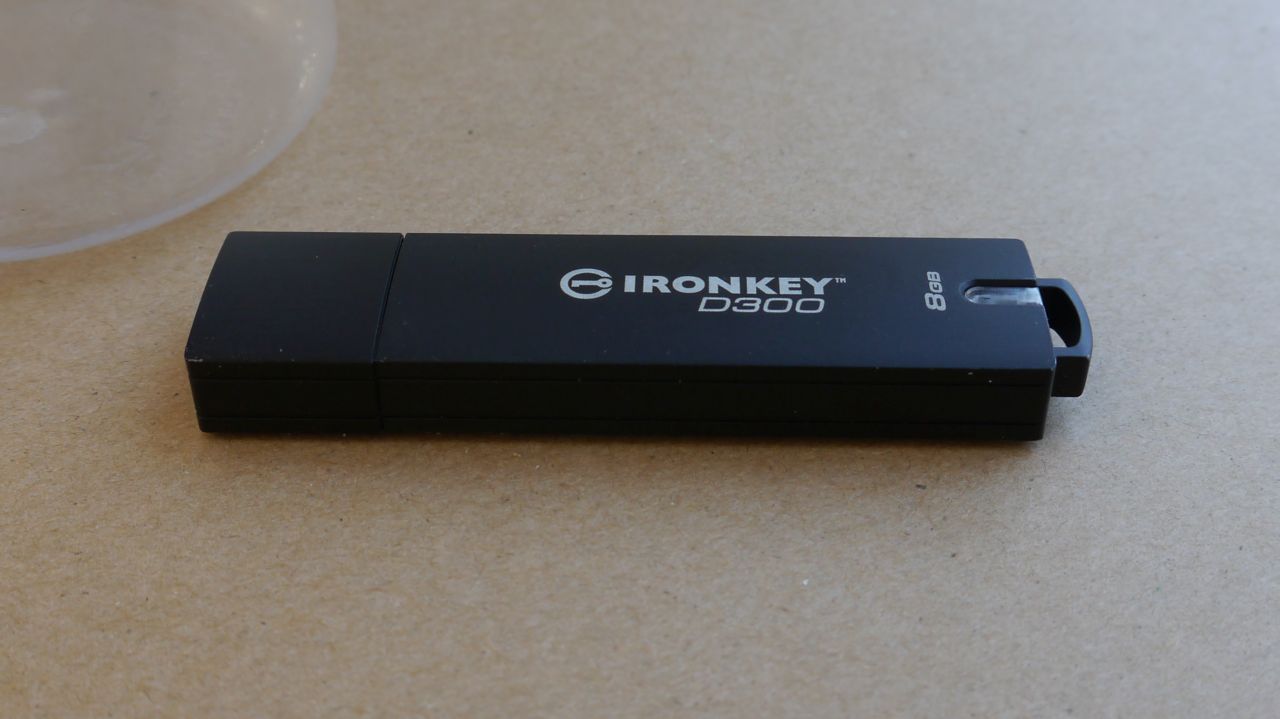
Plug in the Kingston Ironkey D300 (IKD300/8GB) in your computer and the first thing you will notice is that the drive shows up as a CD Drive with a 14.4MB capacity. Surely some mistake! Well, you actually need to initialise the drive before using it for the first on any computer.
Note that Kingston strongly advises not to use the drive via a USB hub. Launching the application will request that you create a password (between eight and 16 characters) and will go on to format the drive.
You will confusingly end up with two “drives”, one with the initialisation software and the other one being the actual empty drive. Insert it in another computer (Linux, Mac or Windows) and you will be prompted to enter the right password.
Otherwise, as for other similar solutions on the market, enter the password wrong 10 times in a row and your content will be erased. As for the drive itself, it is an 8GB model with a zinc casing – which also doubles as a heatsink as the D300 heats up a fair bit under use - and tamper-evident epoxy seal for physical security.
With its cap on, it is waterproof (up to 4ft) and dustproof and at 51g, feels solid. More importantly though, the more compelling protection happens inside the device itself. It is a FIPS 140-2 Level 3 certified device with 256-bit AES hardware encryption.
There is a hardware cryptographic module inside the device itself which means that the encryption and decryption is done on the drive rather than on the host PC, with digitally signed firmware which makes the D300 immune to the notorious BadUSB exploit.
The D300, which comes with a five-year warranty, also offers a read-only option which allows any user, once authenticated, to open and view content on the drive but not change, update or erase the content.
There’s also a managed version of the drive which, as its name implies, allows the drive to be deployed en masse across an organisation but requires Ironkey EMS by Datalocker which allows for the drives to be centrally managed. This allows for drive-specific policies and allows administrators to disable lost or stolen drives remotely and more.
The drives are available in capacities ranging from 4GB to 128GB. The rated transfer rates of the drive vary between 80MBps to 250MBps (read) and 12MBps to 85MBps (write) depending on the capacity. Rule of thumb is the lower the capacity, the slower it will be.
The 8GB model performed better than expected with CrystalDiskMark benchmark results hitting 237.6MBps and 58.69MBps on Read and Write respectively.

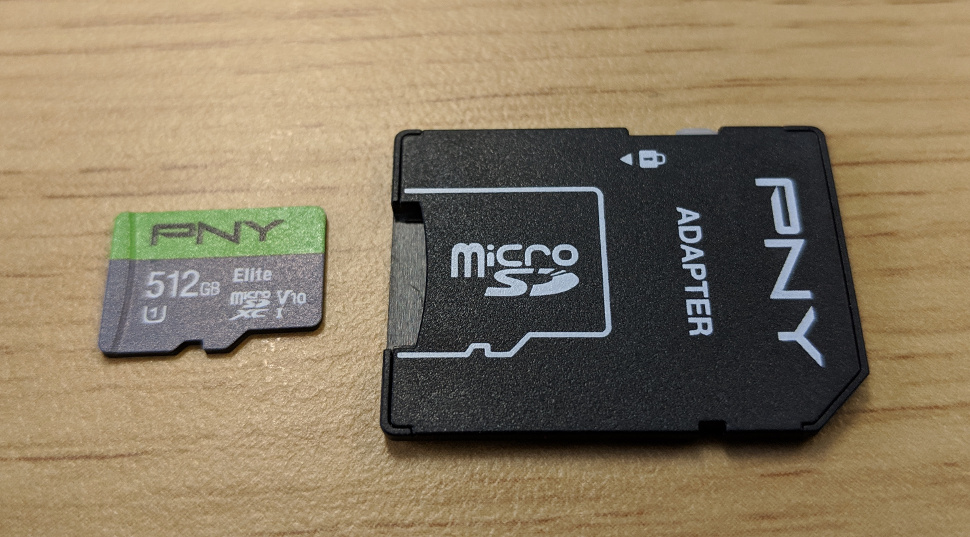
The thought of packing the equivalent of nearly 1,000 CD-ROMs on something barely bigger than the average human fingernail would have been unimaginable only a decade ago.
Now storage companies like Samsung, Sandisk or Integral are slowly pushing 512GB microSD cards in the market, fuelled by demand from mobile devices.
PNY is one of the latest to do so with the Elite, a card that has a rated reading speed of up to 90MBps and enough capacity to store over 80 hours of full HD video content, plus the bonus of having lifetime warranty.
At $350, it is comparable in price with other products in the same category but far more expensive than the 400GB SanDisk Ultra which can be had for about a third of the price for three quarters of the capacity.
We managed write speeds of around 21MBps and read speeds of 66MBps, which are decent numbers without being spectacular,
Owning a 512GB card, the highest commercial capacity available, will allow you to dramatically increase available storage on your smartphone. 512GB is the maximum storage capacity available on phones likes the Samsung Galaxy Note9 and a 512GB card essentially doubles that amount; great for 4K footage of field visits or business videos.
Other devices like Microsoft’s Surface Pro 6 tablet will also benefit if you want to extra (removable) storage capacity although the read/write speeds are likely to confine the card to a pure secondary storage role.

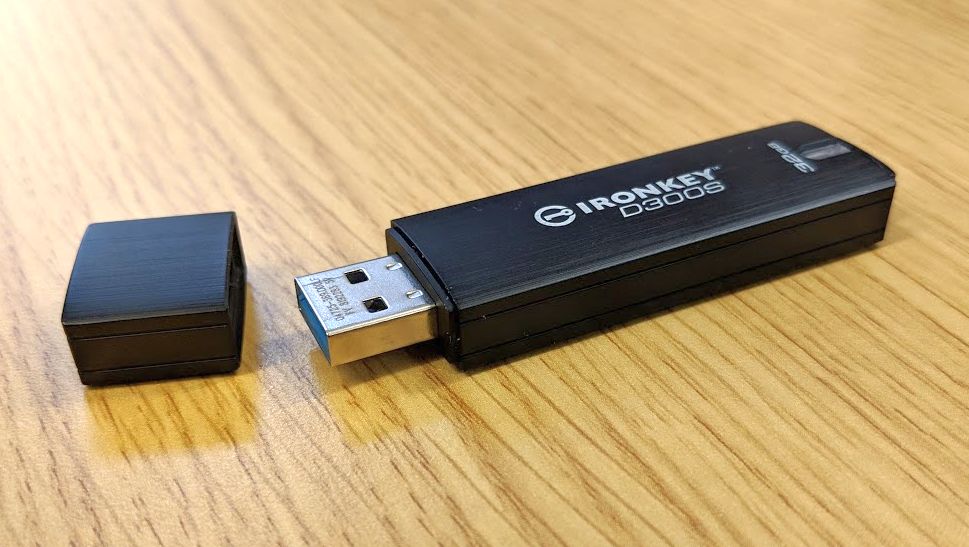
The D300S was announced by Kingston and is an updated version of the D300, launched in 2016, with the suffix S standing for Serialised; more on that later. The drive looks like a standard USB drive but sturdier and much, much more expensive. The smallest capacity - 4GB - retails for £100 while the largest one - a 128GB one - sells for a staggering £520.
Now there is a reason why the D300S carries such a premium according to Kingston. The drive uses custom hardware for encryption (FIPS 140-2 Level 3 256-bit) and decryption which eliminates vulnerabilities associated with any process done on the host system.
That chip and the rest of the hardware is sealed in a tamper evident epoxy material that hardened when it dried.
The drive is also waterproof up to 120cm and should handle bumps and falls easily. The D300S also uses a digitally signed firmware which makes it impervious to the BadUSB attack and it will delete the encryption key after 10 invalid attempts, thwarting any brute force attacks.
Two additional features that separates the S model from the standard model is a barcode and a unique serial number; together they allow system administrators to scan or read the code when configuring the drive.
There's also a virtual keyboard that reduces the risk of having a keylogger storing the password. Sadly though, it does suffer from the fact that you need to install an application prior to using the drive on Windows and the write speeds claimed by Kingston are shockingly low at 40MBps. Read speeds are better at 250MBps.
All in all, Kingston delivers a solid product but this is a very competitive market with the likes of Aegis, Secure Data or Datashur providing some interesting alternatives.
Note that a Serialised Managed (SM) model will follow shortly if Kingston's website is to be believed.

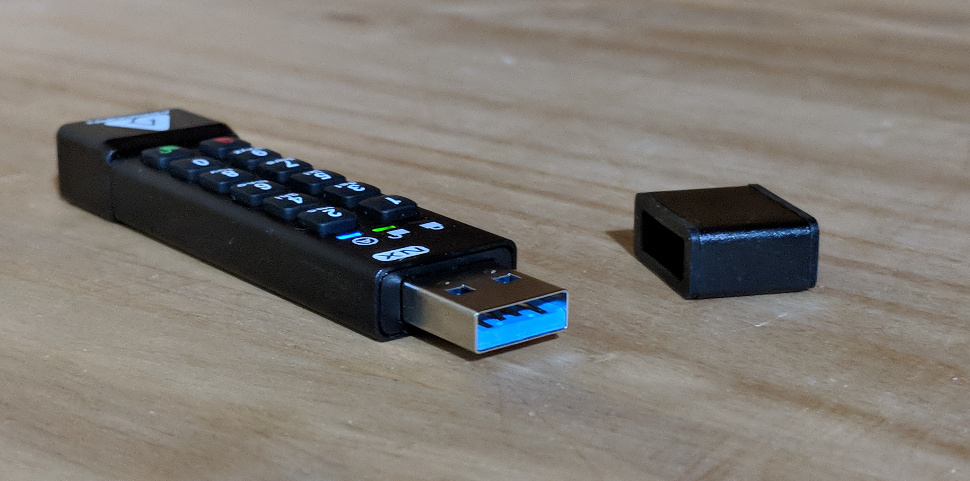
If you need to have small amounts of sensitive data being carried around, then the 3NX could well be a life saver. It brings advanced data protection features to a mainstream market thanks to its attractive low price ($59 for the 2GB/4GB model) and $189 for the 128GB one.
What you do get is some military grade, enterprise-level features like FIPS 140-2 level 3, real time hardware-based encryption, a platform-agnostic setup and a rugged extruded aluminum enclosure.
The data is encrypted using an onboard 10-digit keypad and is powered by an onboard battery.
The 3NX comes with a three-year warranty as well as an IP67 rating. Apricorn claims that the device can hit read/write speeds of up to 77MBps/72MBps, which is more than decent for a USB 3.1 device.
As part of the package, the key can be configured to support independent admin and user PINs. Having the keypad on the key itself makes it near impossible to hack as the encryption hardware is sealed inside the USB drive, not on the host computer.
Furthermore, the buttons are wear resistant and designed not to reveal the most used buttons. Just make sure you don't forget your PIN as you will only have as few as four attempts before the drive deletes the encryption key and with it the ability to decrypt the data stored.

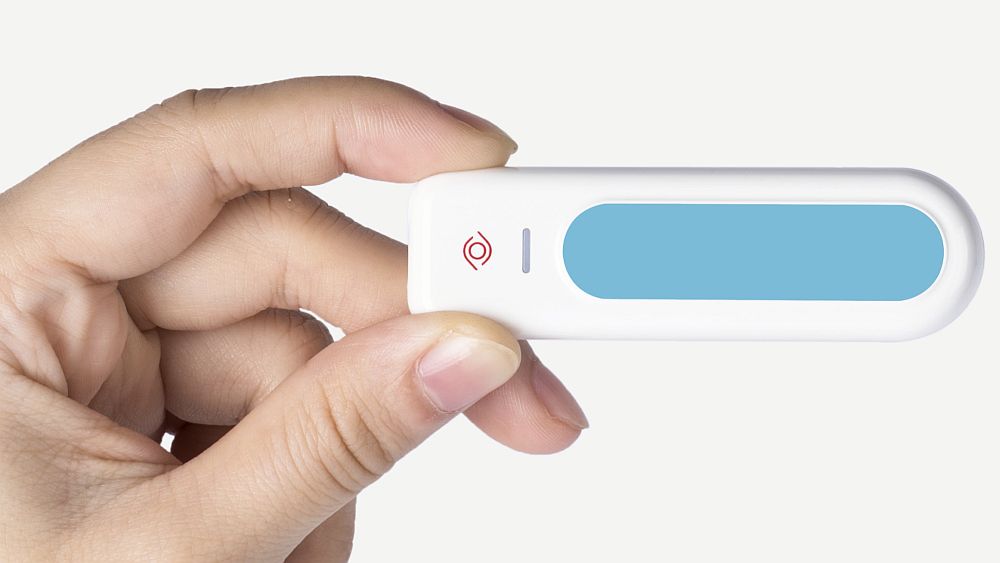
We don't often get Indiegogo projects on our list but we're making an exception for the EyeDisk, which hails itself as the first unhackable USB flash drive. The concept is pretty simple; use your iris as your password rather than cumbersome passwords.
Research has shown that iris recognition is more secure than facial recognition and fingerprint encryption and as a working prototype, it works perfectly well even with the dark. It boasts a binocular registration method and a monocular/binocular verification one.
It is compatible with Windows and Mac but not Linux and you will have to run an app every time you plug it in a client. There's no password to log though, just your iris to be scanned and this takes a few seconds to be registered. You just need to look at a mirror on the side.
We'd prefer to have a sturdier model as this one is made of plastic and would probably not last long in a rugged environment. You will also need to carry a USB type-C at all time to activate the drive as it doesn't have an actual male connector. Other than AES256-bit encryption to keep your data secure, the EyeDisk flash drive consumes only 2W of power and weighs a mere 20g.
It managed some very decent numbers on CrystalDiskMark (130MBps transfer rate on read and 84MBps on write) which means that it won't keep you long. At the time of writing, you can only pre-order it via Indiegogo, the crowdfunding platform, and it is scheduled for delivery from March 2019.
With a starting price of $59 plus shipping for the 32GB version and $99 for the 128GB, it is reasonably priced although the prices are likely to go up once the early bird offer ends.
We'd love to see something similar come to Windows laptops equipped with a Type-C connector although one has to say, competition is likely to be far more intense.
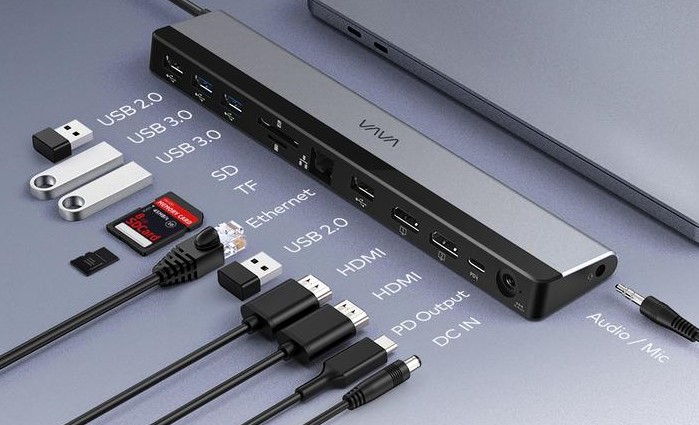
Although a thin-and-light laptop can easily be carried around the office, many employees now find themselves working from home where staring at a small screen all day can be tiresome. While you could invest in a desktop computer for your home, a docking station is a much cheaper option that will allow you to use the laptop you already have with a monitor which will give you more screen real estate and hopefully increase your productivity as well.
If you’re in the market for an affordable docking station, the VAVA 12-in-1 Dual 4K Docking Station provides you with all the ports you’ll need to plug in a mouse, keyboard, external hard drive and more for just $99.99. The company’s thin and compact docking station has a long rectangular shape and can easily be put away when not in use or tucked in a bag when you need to get some serious work done while traveling.
VAVA’s docking station comes with 12 ports including two USB 2.0 ports, two USB 3.0 ports, two HDMI ports, an Ethernet port capable of reaching speeds up to 1000Mbps, an SD card reader and an audio jack. It’s worth noting that the device only really has 11 usable ports as you’ll need to use the DC IN port to power the device with the included power brick.
Since the device includes dual HDMI ports, you’ll be able to connect two monitors which will certainly make multitasking much easier than it would be on just your laptop’s screen. You can either use mirror mode to show your laptop’s display on two monitors or you can extend your laptop’s screen to both displays at up to 4K at 60Hz. VAVA notes that only the 2019 Macbook and above support 4K at 60Hz and other displays will go down to 4K at 30Hz when using the docking station’s dual HDMI ports.
The docking station can also be used to fast charge your devices so they’ll be ready to go when you are. A USB-C connector on the left side of the dock can provide 65W fast charging for your laptop while the USB-C PD output port can provide 18W of power to fast charge your smartphone. Transferring data from an external hard drive or flash drive using VAVA’s docking station is also quite fast as the device’s USB 3.0 ports can reach speeds of up to 5Gbps.


Keeping all of your devices topped up and ready to use has certainly gotten easier with the advent of portable power banks. However, what about when you also need to power a laptop, portable monitor or even a small TV when outdoors and away from a power outlet? Thankfully, some manufacturers have begun to add AC outlets to their portable batteries so you can charge or power almost any device regardless of whether it connects via USB or with a plug.
For those looking for a portable laptop charger that won’t break the bank, RavPower has you covered. The company’s PD Pioneer 20000 costs only $89.99 and can charge all of your devices as it features a USB-C port, a USB-A port and a three-prong AC wall socket. RavPower also makes two different variants of the device depending on whether you need a North American or UK wall socket to charge your laptop or other AC-powered devices.
As its name suggests, the PD Pioneer 20000 contains a 20,000mAh battery capable of delivering 74Wh of power. The device’s 30W PD port can fully charge a 2015 Macbook in around two hours while its Quick Charge 3.0 port can deliver up to 18W of power to compatible USB-A devices. The PD Pioneer 20000’s AC port can even reach a max AC output of 100W.
If you’re getting ready for a trip and just remembered to pack your PD Pioneer 20000, you won’t have to wait too long to fully charge the device as it can be recharged in just three hours. While certainly larger than most power banks, the device can easily be slipped into a side pocket of a backpack or messenger bag as it is 2.7 inches wide and 5.8 inches long. However, you won’t want to be lugging the PD Pioneer 20000 around for too long as the device weighs 660g.
In addition to one USB-C to USB-C cable, RAVPower also includes a carrying pouch complete with pockets to keep its portable laptop charger safe on the go. It’s worth noting that a USB-C adapter isn’t included but if you’re in the market for a portable battery with a USB-C port, you’ll likely still have the one that came with your smartphone or laptop.


Sandberg's Powerbank is neither the cheapest or the most powerful around. However, it does come with a couple of features that make it a rather enticing option.
It outputs to a number of voltages (12V, 16V, 19V and 20V), automatically choosing the right one depending on the device connected to it.
There are also two USB ports and these are obviously hardwired to output 5V on both. There are also 12 different charge tips but none would fit my Dell XPS 13, and they won't be useful for USB Type-C models like the Dell XPS 13 2016 edition.
There are a couple of things that differentiate this from most of its rivals on the market: it uses a brushed, premium, aluminium finish, with bright blue LED status lights that clearly indicate the amount of juice left or how close the battery is to being charged.
Speaking of charging, Sandberg decided to equip the Powerbank with a dedicated input port which allows the device to be charged in record time thanks to a 36W (18V/2A) power supply unit.
In comparison, the Aukey 30Ah we reviewed recently could only be charged using a 12W USB port which makes charging a lengthy process, often an overnight affair. It also means that you don't rely on your laptop or mobile charger to get the battery replenished.
Sandberg has equipped the Powerbank with an automatic 'switch on and switch off' mechanism to save power. It can deliver up to a total of 85W meaning that it can accommodate a massive 70W on its laptop/DC Out port. Note that the device comes with an industry-leading five-year warranty.

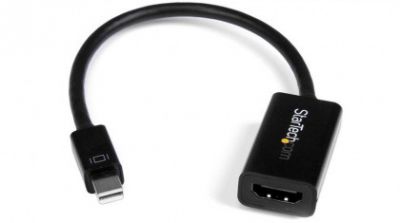
Quite a lot of Ultrabooks (and even a fair few graphics cards) now come with Mini DisplayPort connection as standard in lieu of the traditional D-Sub or HDMI ports; which can prove to be a pain if you're planning to deliver a presentation at a client's office and they only have a HDMI projector.
In theory, Mini DisplayPort – which is popular with Apple - has enough bandwidth to drive 4K monitors at 60Hz (HDMI can only do it at 30Hz) which results in a smoother end-user experience. However, today's product doesn't achieve this (it does reach 4K at 30Hz though).
What it does is merely converting the Mini DisplayPort to a HDMI port, all for just over £23 (about $35, AU$45), more specifically from DP m1.2 to HDMI 1.4 without the need for drivers or external power source.
Unlike other passive video adaptors, this one offers active signal conversion which means that it doesn't require a multi-mode DisplayPort source signal (like AMD's Eyefinity) which greatly expands its compatibility option. In addition, mDP supports 5.1 Surround Sound out of the box and is compatible with most Intel Thunderbolt devices. You will still need to have a HDMI cable at the other end though.


From a distance, it looks like a standard USB cable with a microUSB connector on one end and a bigger-than-average one on the other.
But look closer and you will see that it is a mirroring and KM (keyboard and mouse) sharing accessory. The KMC6105 allows you to view and interact with your Android device regardless of the brand and platform (i.e. tablet, Chromecast, smartphone) as well as sharing your keyboard and mouse.
Perhaps more importantly, it charges your Android device while in use, something that the previous generation model did not offer. Unlike that one, it allows you to use your smartphone as an additional screen. It also offers copy/cut and paste as well as drag and drop across the platform.
You will need to install a small executable file that is located on the device itself. Otherwise it will only behave like a standard (expensive) cable. You will need to enable Developer Options in newer smartphones by clicking seven times on the "build number" menu.
Subsequently, you will need to allow USB debugging which is how the KMC6105 works its magic. The installation process will also download the device's driver where necessary. Note that the device carries a standard two-year warranty and is USB 2.0 only.
The Android OS Mirroring and KM sharing cable is on sale at Lindy for £24.96.

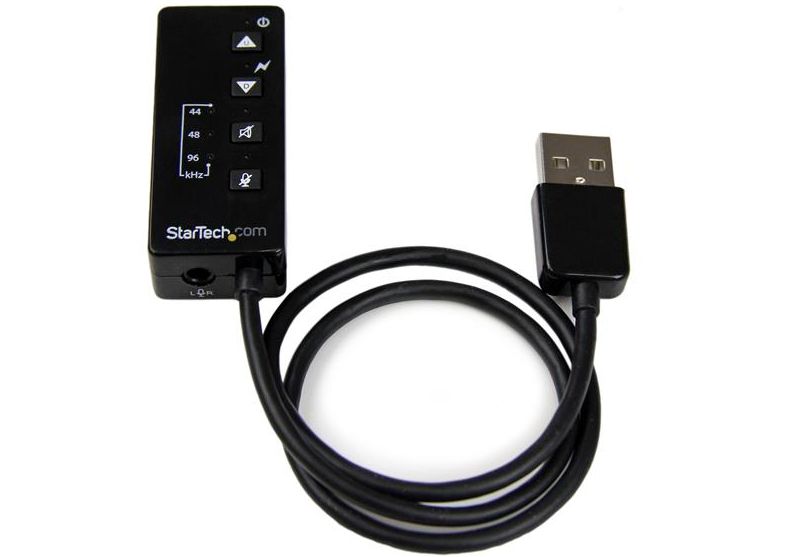
Audio has historically never been a forte for laptops and that hasn't changed for Ultrabooks especially for those at the lower end of the spectrum (one might even say that it became worse).
Which is why something like an external sound card comes in quite handy. USB devices in general usually carry a performance penalty mostly because they use the host's processing power.
They also have a small impact on the battery life. However, given how powerful the recent crop of Intel-based processors has been, that shouldn't be an issue.
The ICUSBAUDIOMH External USB Card lets you add an S/PDIF digital audio output or a standard 3.5mm analog audio connection to your system through USB and essentially adds a 5.1 sound card.
The device, which is about the size of a lighter, has two 3.5-inch jacks for headphone and microphone (some Ultrabooks like the Lenovo Yoga 2 Pro only have one port).
Startech's external card comes at the end of a rather long USB cable, uses a Via VT1630A chipset and is capable of sampling audio at up to 96kHz.
Available in black or white, it does support Sony's PlayStation 3 gaming console and comes with a two-year warranty.
This USB Stereo Audio Adapter External Sound Card is available for sale at Startech.


The trend for thinner, lighter and more aesthetically pleasing laptop designs gave us the Apple Macbook, a stunningly beautiful device with only one connector, a lonely USB Type-C port.
There's a plethora of accessories - adapters and docking stations - on the market to solve that problem though, especially as more and more laptops are following Apple's lead and cutting the number of connectors to a minimum.
The Satechi Slim Aluminum Type-C Multi-Port Adapter is one of them. Available in four Apple-friendly colours, this device quadruples the amount of ports of the aforementioned MacBook.
There's a pass-through USB Type-C as well as two USB Type-A ports and an HDMI connector capable of supporting 4K video content, albeit at 30Hz - we'd certainly have preferred a DisplayPort.
Physically, the device is about 105mm long and comes with a 150mm USB Type-C cable. The enclosure is made entirely of aluminium which has a propensity to get scratched and marked when flung around too often.Compared to other products on the market, having a cable is preferable to avoid accidental damage to your laptop's port.
Note that each USB port on the Slim Type-C hub can provide 5V/1A (or 5W) and that Satechi advises that the maximum power load on the hub shouldn't exceed 10W, which excludes using it for heavy duty activities (e.g. charging two tablets).
The product comes with a one-year warranty.

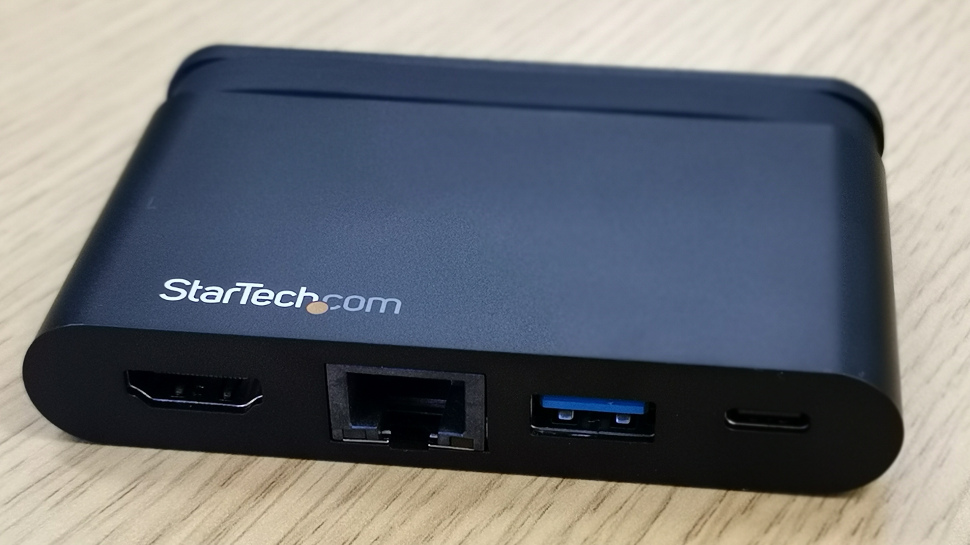
Dealing with a number of connectivity options is now an increasing challenge not only for office workers, but also those whose working habits are a bit more flexible. If you're someone who is constantly connecting in different locations, for example hot-desking in multiple offices, then StarTech has you covered. This new mobile hub hooks up to your smartphone or laptop via USB-C, coming with connections ports for USB, HMDI, ethernet and USB-C, meaning you should never be caught short - and it's small and light enough to be carried in your pocket. The HMDI connection supports UHD 4K displays, with the USB-A supporting Fast-Charge technology, meaning you can power both the adaptor and your device in one go.


The Mophie Powerstation USB-C XXL looks like no portable battery we've seen before. It uses a soft fabric finish and while it has some hard edges, it minimizes the risk of getting your items scratched by eliminating pointed corners altogether. At $149.95 though, it will be a tough sell with so many choices out there in the market.
Its relatively low capacity (19,500mAh) will be a concern when competitors routinely offer 30,000mAh or more. That said, Mophie claims that the battery will be able to add up to 14 hours to the battery life of a USB-C Macbook which is no small feat especially as Mophie says that this would be additional video playback time rather than having the laptop just sitting idle.
Apple states that the MacBook has a battery life of up to 10 hours so you'd be more than doubling that. The battery charger also supports Fast Charge and can send 30W of power to any compatible devices. At 390g for a thickness of merely 23mm, it is very portable.
Add in a two year warranty and it looks like a decent deal. Bear in mind though that it has only two ports (one USB Type-C and one USB-A) and that the competition offers more features at less than half the price (albeit without the cachet).
Jackery, for example, offers a 19,200mAh battery with a 45W output that can charge bigger laptops, ditto for the RavPower Turbo series which packs a larger 20100mAh battery. Both have three USB ports and come with a very significant discount compared to the Mophie (up to 67% off).
Note that there is an even bigger (and even more expensive) Mophie 3XL battery that comes with an additional port and a third extra capacity.


Omnicharge's Omni Ultimate battery charger is not for everyone. It is big, it is bulky and expensive. Note that the Omni Ultimate has been approved as plane safe - so you can take it with you in the cabin when travelling. You just need a form to fill in for it pre-boarding, which you can get at the airport/gate.
For a growing community of demanding power users though, this battery pack is likely to be an absolute godsend. So much so that an Indiegogo campaign started beginning of October 2018 is likely to raise nearly $1 million from more than 4000 backers, nearly 20x its original flexible goal.
The external battery is built like a tank and is both dust and splash resistant with rubber flaps covering its power outputs. And its list of features is just as impressive: it has a power outlet that can delivery up to 150W DC or 120W AC output, a 40.3Ah/145Whr capacity, a USB Type-C connector that can deliver up 60W power, two USB ports supporting 15W (5V3A) each, a three-hour fast charging (QC3.0-compatible), pass-through charging and a useful OLED display that shows you battery capacity in real time (and to three decimal places).
You can charge it using a solar panel and it is equipped with pass-through charging plus you can even add a spare battery pack. Note that there is a 230V EU version available (but no UK because of the plug size).
With an SRP of $599 though, it will be a tough sell especially when there are cheaper (but less powerful) options around. The MaxOak K2 for example is cheaper and has a higher battery capacity but doesn't have AC output or USB Type-C connectivity. The RavPower AC Power Bank can output to AC but has a battery capacity of only 27Ah.
The Omni Ultimate will be available via Amazon in Q1 2019 (planned for end of January/start of February) in the UK and in the USA. Other territories will follow.


Ensuring your device is powered up on the go is a daily worry for many of us, and there's nothing worse than running out of battery at a crucial time. Linedock thinks it has the answer with its slim and stylish power bank to keep your Macbook charged up when you need it the most.
At just 9mm across, the device slips in neatly under your laptop and packs in a massive 20,000mAh rechargeable battery that should keep you powered up on the move.
Linedock has nine ports in all, including three USB-C ports, three USB 3.0 ports equipped with Qualcomm QuickCharge 3, an SD card and a DisplayPort hub, and multiple devices can be connected at once.
But that's not all - as Linedock can also act as a spare SSD for your device, with the option of adding 256GB or 1TB of storage as an extra bonus to make this a true mobile work hub.
Lindeock has been designed for 13in MacBook Pro devices, but the company says that it is compatible with any laptop powered by USB-C, meaning PixelBook owners are in luck. At $299, this is simply a must-have for Mac users that work on the go, offering style, power and flexibility.

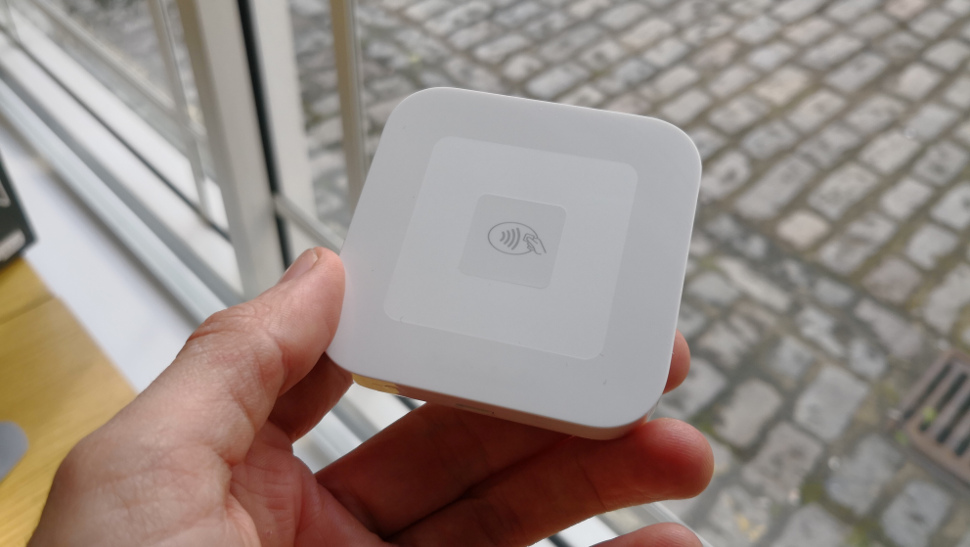
As more and more consumers ditch cash for contactless and digital payments, businesses of all sizes also need to adapt. Square has long been one of the most exciting payments companies around today, and has now finally brought its Reader product to the UK for the first time.
The product acts as a mobile POS, allowing customers to quickly pay for their items using a contactless card, mobile or wearable device. Targeted predominatly at small businesses or traders, the Square Reader is slim and compact, easily fitting in the palm of your hand.
The £39 reader weighs in at just 56g, meaning it can be handheld, or tethered to a till or counter using an additional £19 dock, allowing for a truly mobile steup. Anyone signing up to Square's service can get approval to start using the system within the hour, taking much of the headache out of setting up a new payments platform, with Square’s own software system offering a POS service as well as in-depth analytics.
The tool seems like an invaluable asset to any small business looking to grow or expand, or any company looking for a more mobile setup. Perhaps our only gripe would be that the device is potentially too compact, and could be lost - but asides from that, a Square Reader could be the key to taking your business to the big time.


Another Indiegogo/Kickstarter campaign brings us a product range that will put a smile on owners of Apple MacBook and MacBook Pro laptops. The DockCase adapter is essentially a docking station that expands the number of connectors that the aforementioned notebooks offer.
Unlike previous attempts, the designers have opted for a enclosure that wraps around the Apple power supply unit and essentially augments its capacities: think of it as an exoskeleton for the USB-C power adapter. The 30W MacBook adaptor gets a HDMI connector (v2.0, so capable of handling 4K) and a USB 3.0 port, the 61W MacBook Pro 13-inch model gets an additional USB port while the 87W dock for its bigger sibling adds another two.
We had access to one of the first finished units and we’re glad to report that, after a few hiccups, it worked as advertised. Check if the Apple power brick is well connected with the product; the light will be lit up once DockCase Adapter is connected to the MBP. Also use the cable in the box, rather than your original cable as the Apple cable for MBP can only transmit power, not data.
We’d love if DockCase’s bundle cable could be a tad longer and would wish that Seesaw use a sturdier white plastic case for the dock design. One thing we can't really complain though is how affordable it is, at least during the early bird period.
The MacBook HDMI model costs a mere $40, reaching $47 for the MBP 13 and $52 for the MBP 15 (costs are without shipping) with adding a pair costing $30, $35 and $44 respectively, great if you work at home and in an office.
Contributer : Techradar - All the latest technology news https://ift.tt/3hn1Kln

 Reviewed by mimisabreena
on
Saturday, September 11, 2021
Rating:
Reviewed by mimisabreena
on
Saturday, September 11, 2021
Rating:















No comments:
Post a Comment